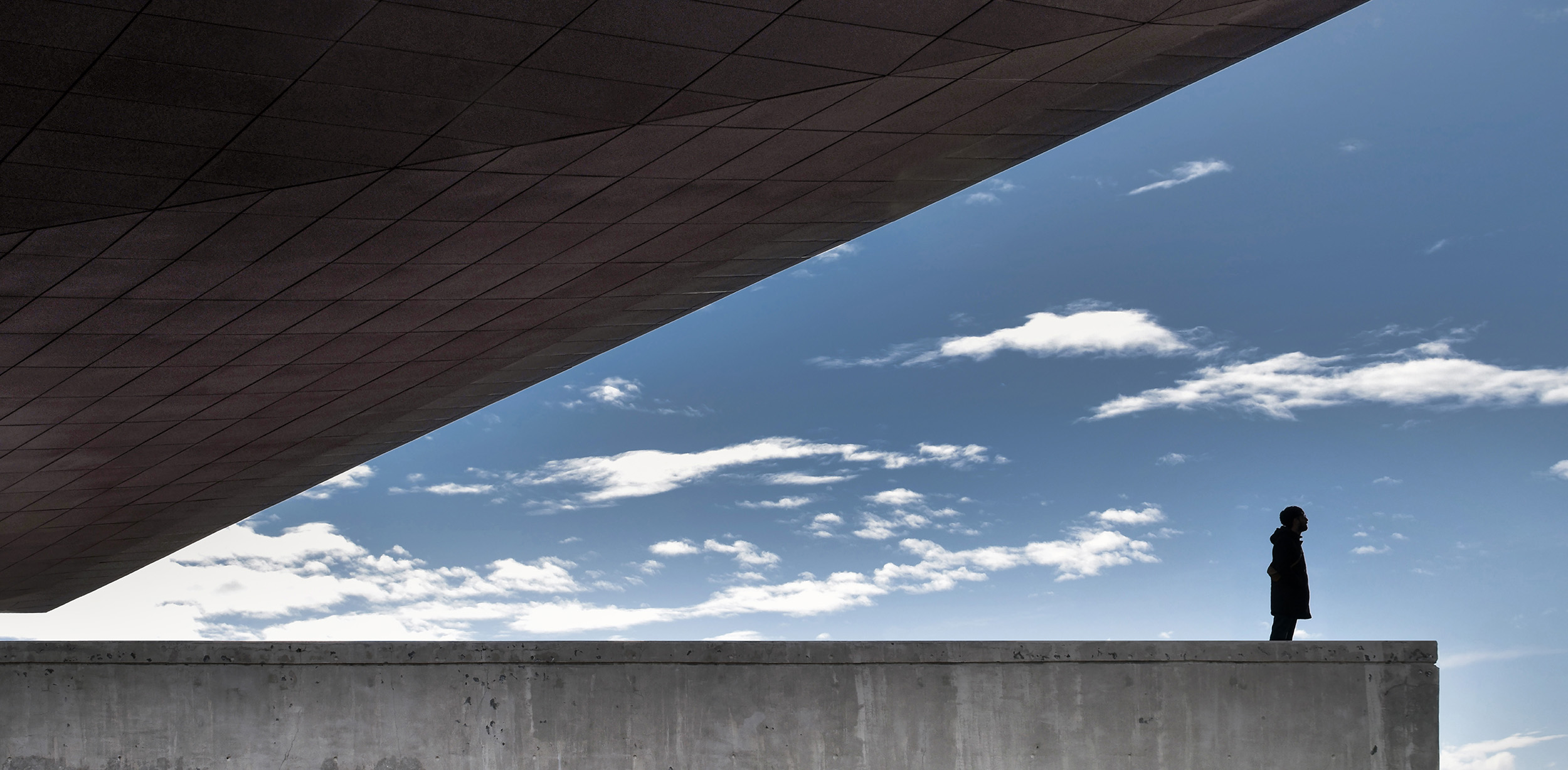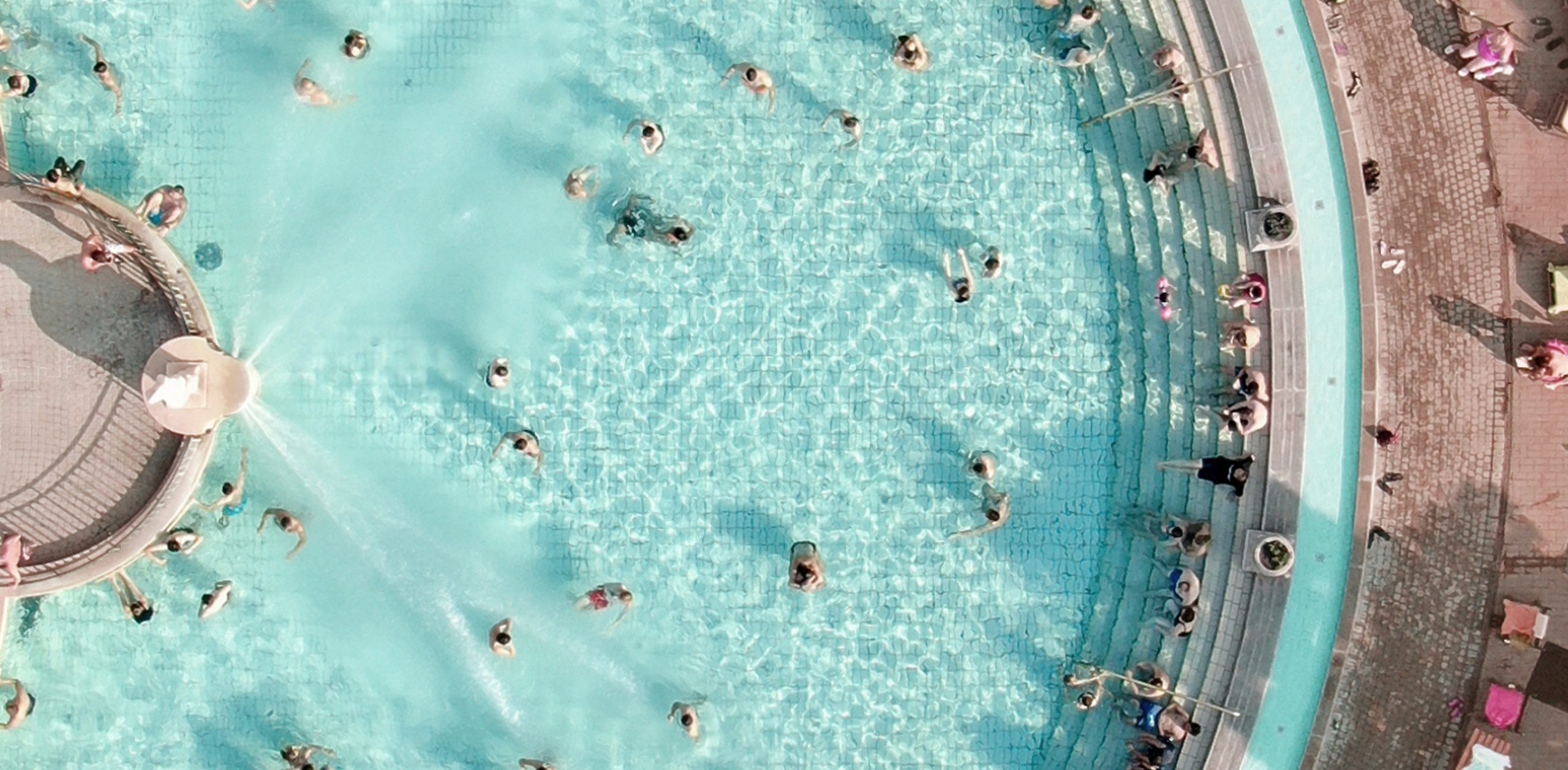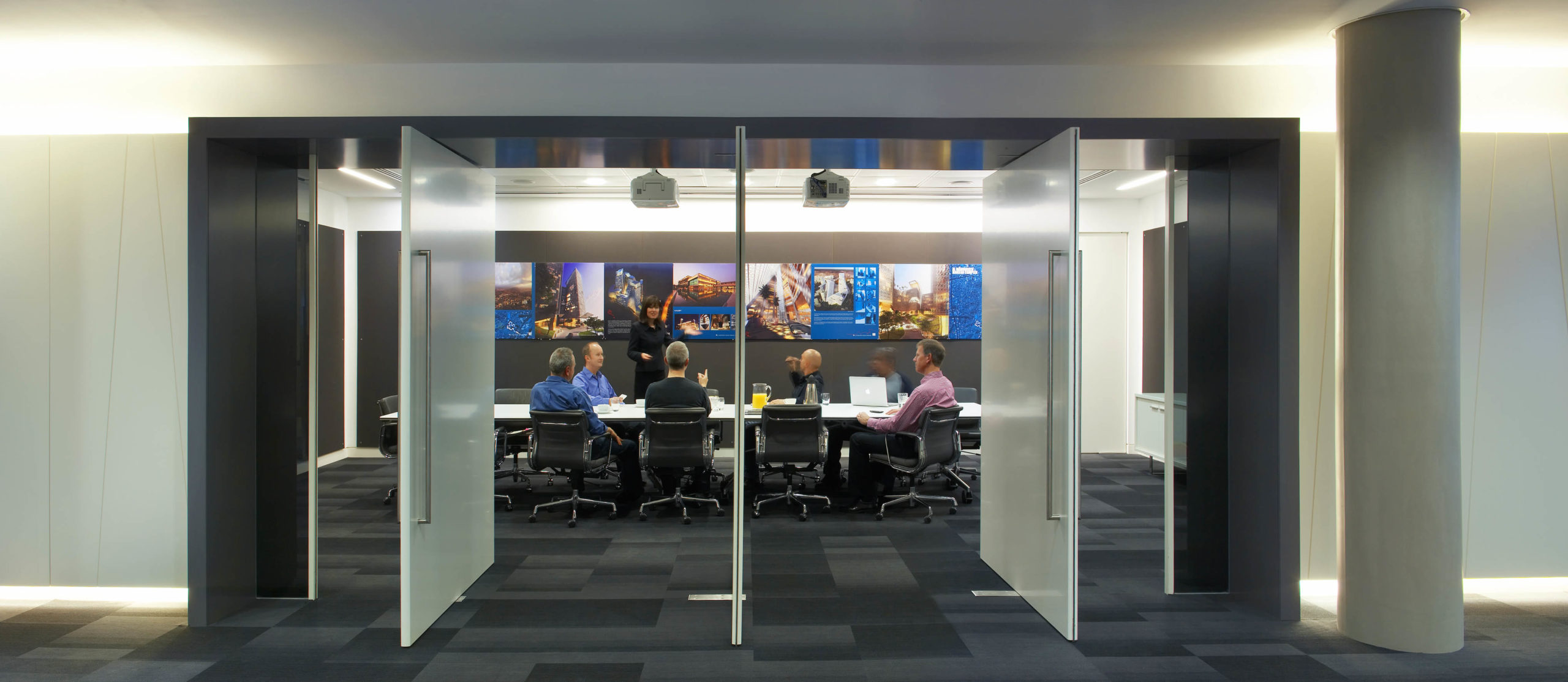Explore a further 25 extraordinary architectural photographs, each one a Finalist in the 2021 One Photo Challenge. Let us know which are your favorites on Instagram and Twitter with the hashtag #OnePhotoChallenge!
← Previous 25 Photos Back to the Start →
“Porthouse” by Paulo Fontes
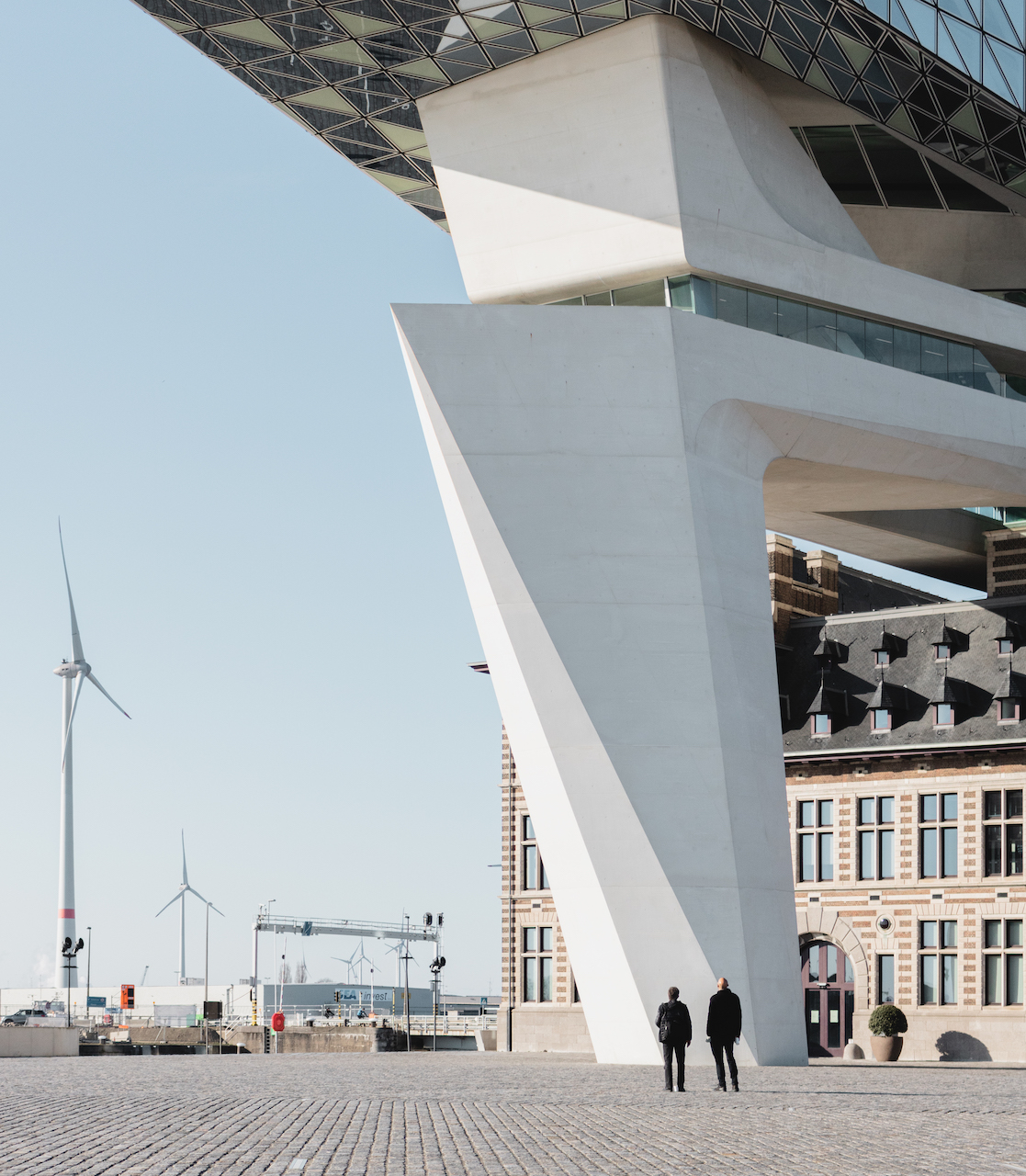
“It’s always impressive to look at Zaha Hadid buildings. This magnificent shape, landed over an old fire station and creating a new use for the building, is one of the most iconic buildings in Antwerp. The picture was taken on a sunny winter day, which gave me nice lighting to work with. The people give it the human scale needed to feel the space better.”
Camera: Canon
“Villa Vals” by katherine gowman
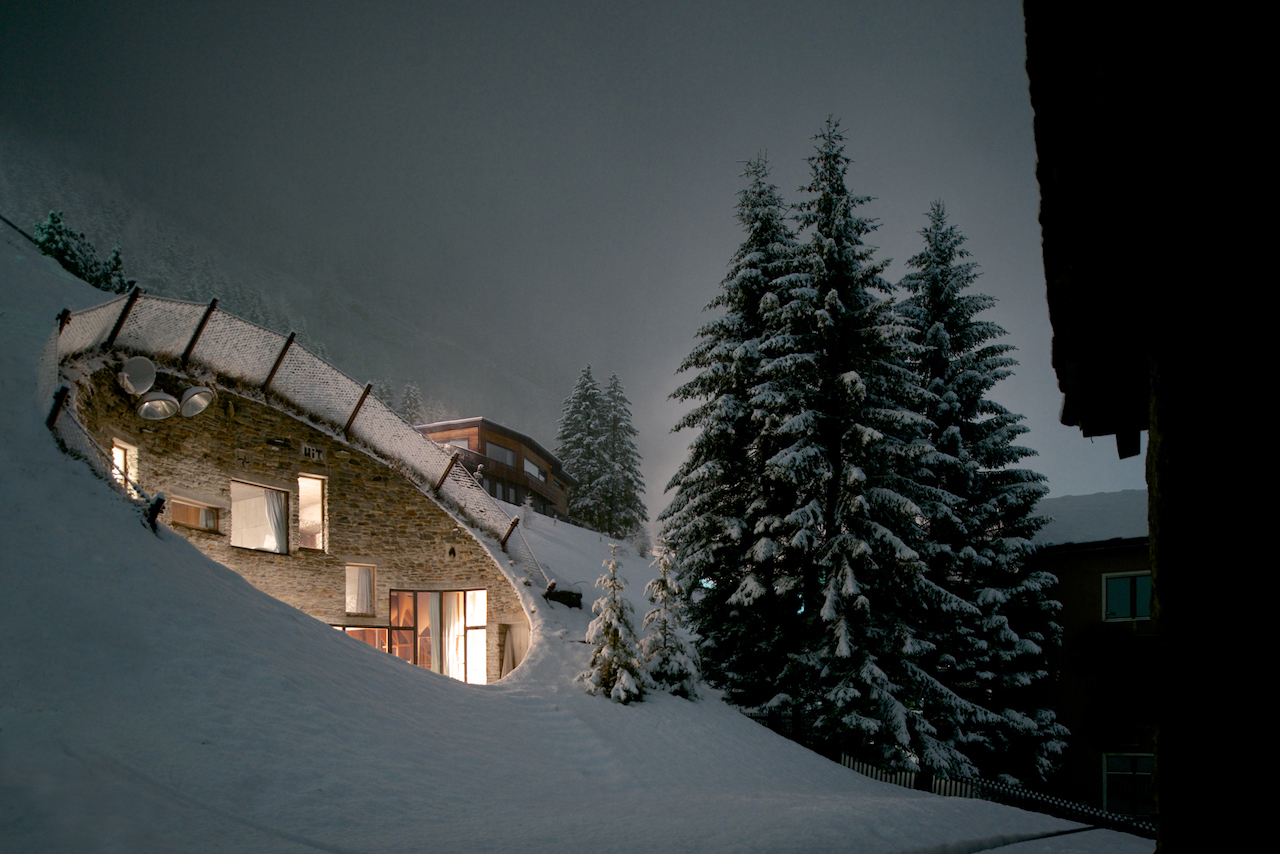
“In Vals Switzerland, adjacent to Zumthor’s Theme, there is a secret carved into the mountainside. Because the topography is in an avalanche zone, the entrance to this home (Villa Vals by SeArch Architects) is through their barn, of which I am standing under its overhang to capture this photo. In the case of an avalanche, the barn has steps to an underground tunnel leading up to the home. In the wee hours of Christmas Day, I woke to falling snow and rushed out to capture the quiet purity of this home and the village of Vals. Magical!”
Camera: Nikon
“Formerly super-secret soviet structure, Duga radar in winter, Chernobyl-2, Ukraine” by Sergiy Kadulin
Sergiy Kadulin Photography
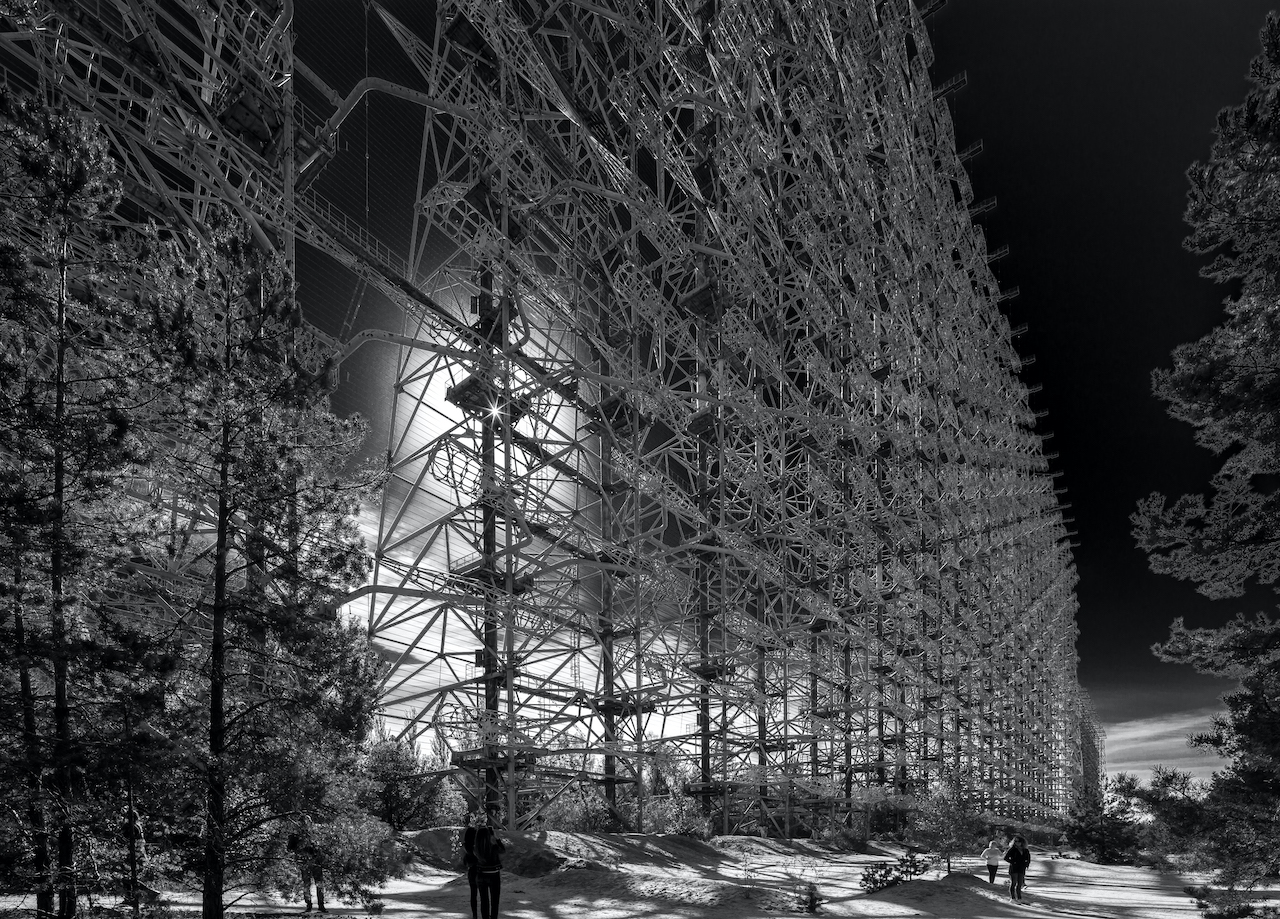
“Now open to public, located in still radioactive Chernobyl zone, “Duga-2″ radar used to be super-secret soviet era military structure designed to capture ballistic missiles launches at far distances. Despite of its huge size of over 750 meters length, it was hidden in the forest so well that even from 300 meters away you can’t see it. During soviet time this place on the maps was marked as ‘pioneers’ camp’ and even bus stop existed with this name on it, however the whole area was strictly guarded.
As a photographer, it was a challenge to photograph it: even with 17-mm tilt-shift lens I had very little space to put the tripod to capture full size of the radar. I decided to make b/w, strong contrast image to create dramatic look and feel of the place, which is still dangerous to humans due to radiation.”
Camera: Canon
“Amir Hamzah Mosque” by Mario Wibowo
MWP
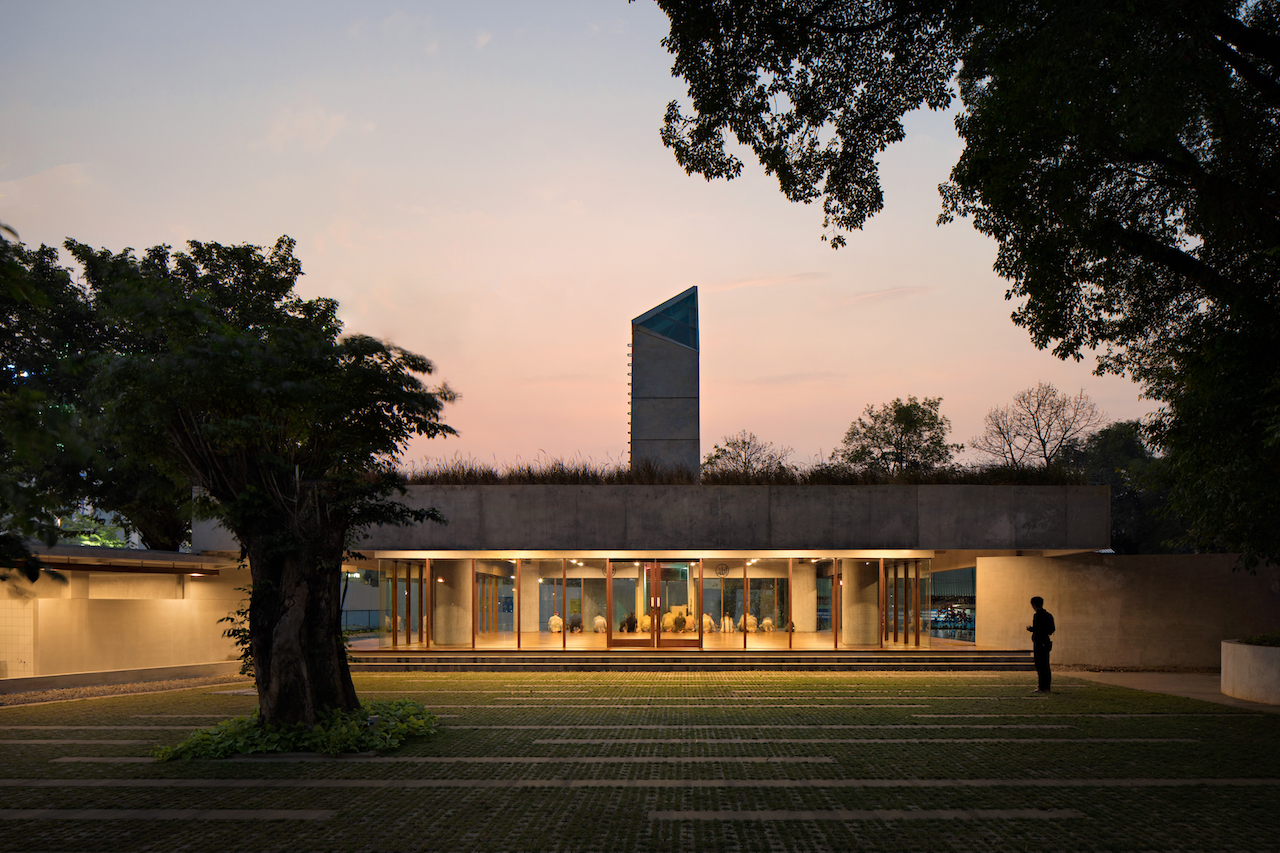
“Amir Hamzah Mosque is located inside Ismail Marzuki Park – an arts, cultural, and science center located in the centre of Jakarta, Indonesia. The complex comprises a number of facilities such arts theaters, cinemas, exhibition hall, gallery, and libraries; Therefore the mosque was built to accommodate the moslems inside the perimeter.
The photographer is trying to capture the essence of the building, a religious building with monumental tower, adding greeneries in the foreground which explaines the mosque inside a park, moslems praying inside the hall, a man in the silhouette lives there to take care of the mosque, and to create more drama the photograph was taken at sunset to create a moody sky and interesting light coming from the interiors.”
Camera: Canon
“The First Occupant” by Arshdeep Singh
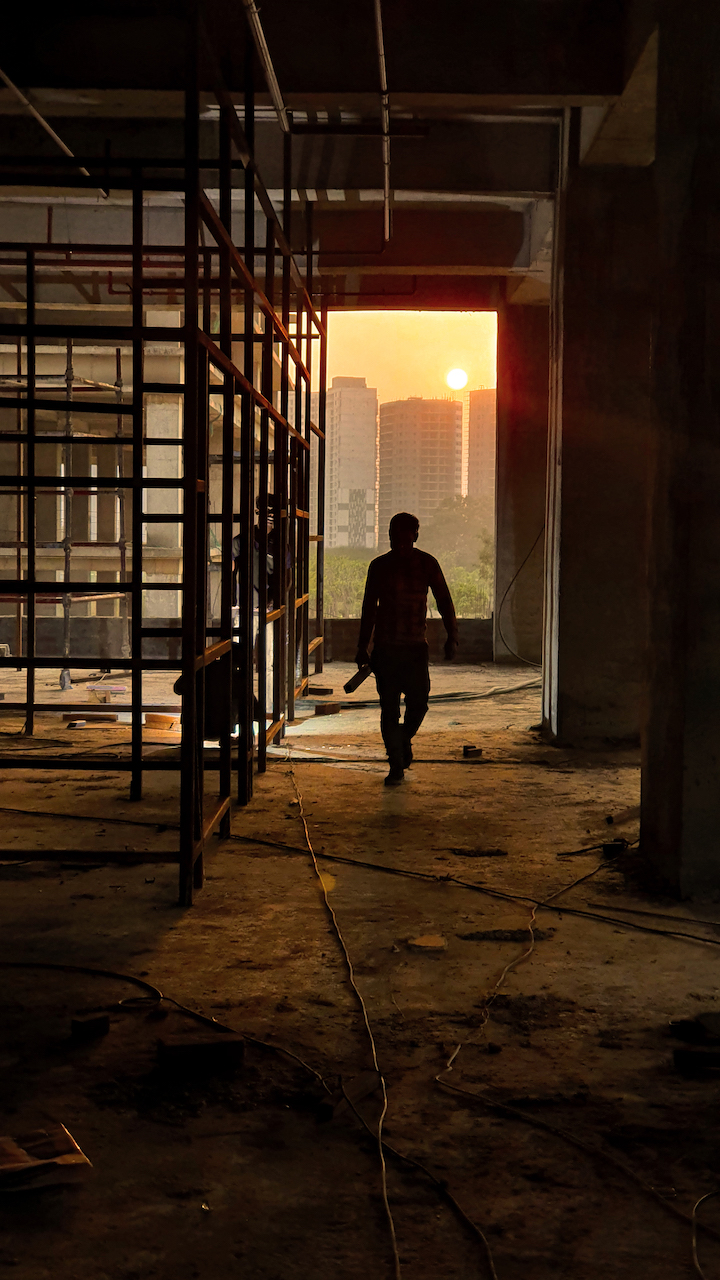
“The building architects design revolves around clients and experiences the built space offers. But the First Occupants of any building are the Laborers who make any barren land habitable and are the first ones to call that land a home or a workplace. The title tries to focus on those hardworking and often exploited laborers who spend up to a decade nurturing a building.
The photograph is taken in New Chandigarh, India an extension of the Le Corbusier designed masterpiece Chandigarh. These migrant workers and laborers who come looking for work far from their homes, sometimes hundreds of kilometers away from their native states, were left on their own when the pandemic hit. They experienced hardships while traveling back to their homes on foot or bicycles are now finally returning to resume work on their second homes. This picture tries to portray them as the Heroes they are.”
Camera: Samsung Galaxy
“Landscapes Found” by Pedro Ignacio García Sáez
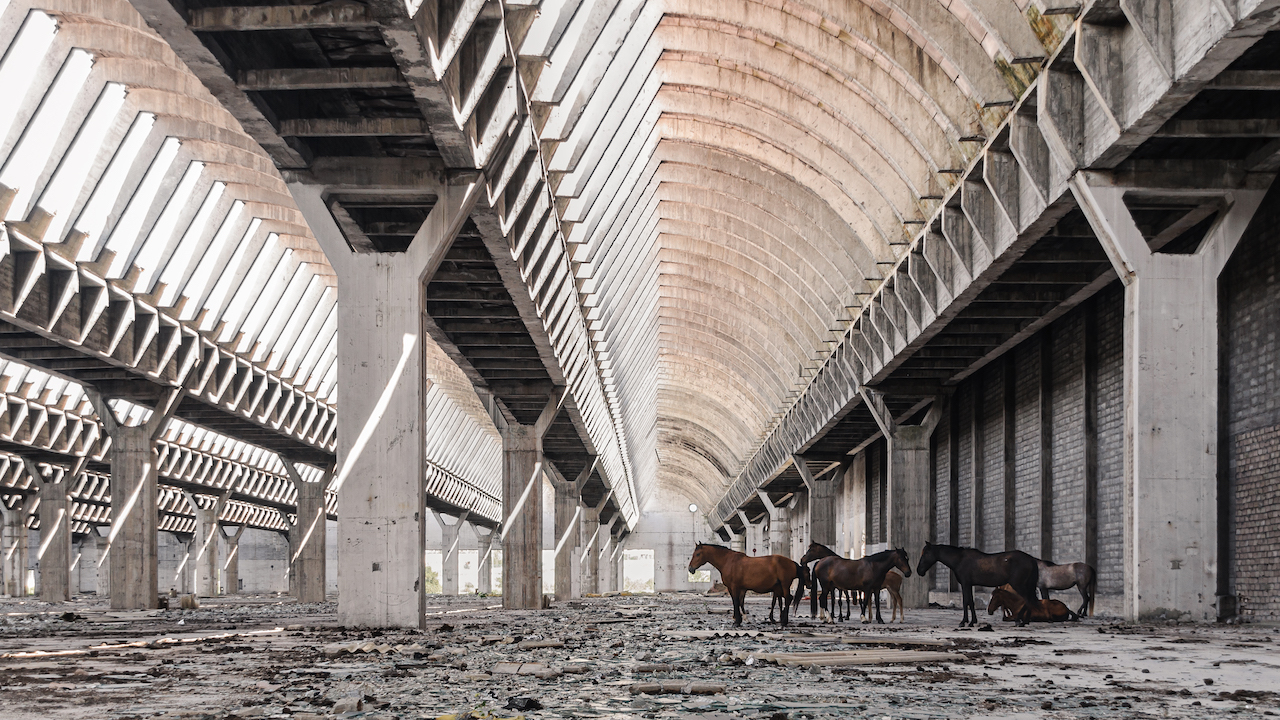
“The work is about believing in the contemporary sensibility. A contemporary sensibility capable of assimilating obsolete remnants of our culture and retrieving them through a process of reinterpretation and alteration, redefining its meaning. Its about colonizing disused spaces to establish a new order.
Recycling the city and the landscape; recycling architecture. The textile factory is one of the largest industrial vestiges of the city of Malaga. The structure that once housed the factory, employing much of the citicens, brings a massive scale space bathed in a homogeneous zenith light that filters through the ribs and drain accompanying beams. An area of high potential, not only for its quality but for the great opportunity offered.”
Camera: Nikon
“Voluntary insomnia” by Mili Sánchez Azcona
Fundación Arquia
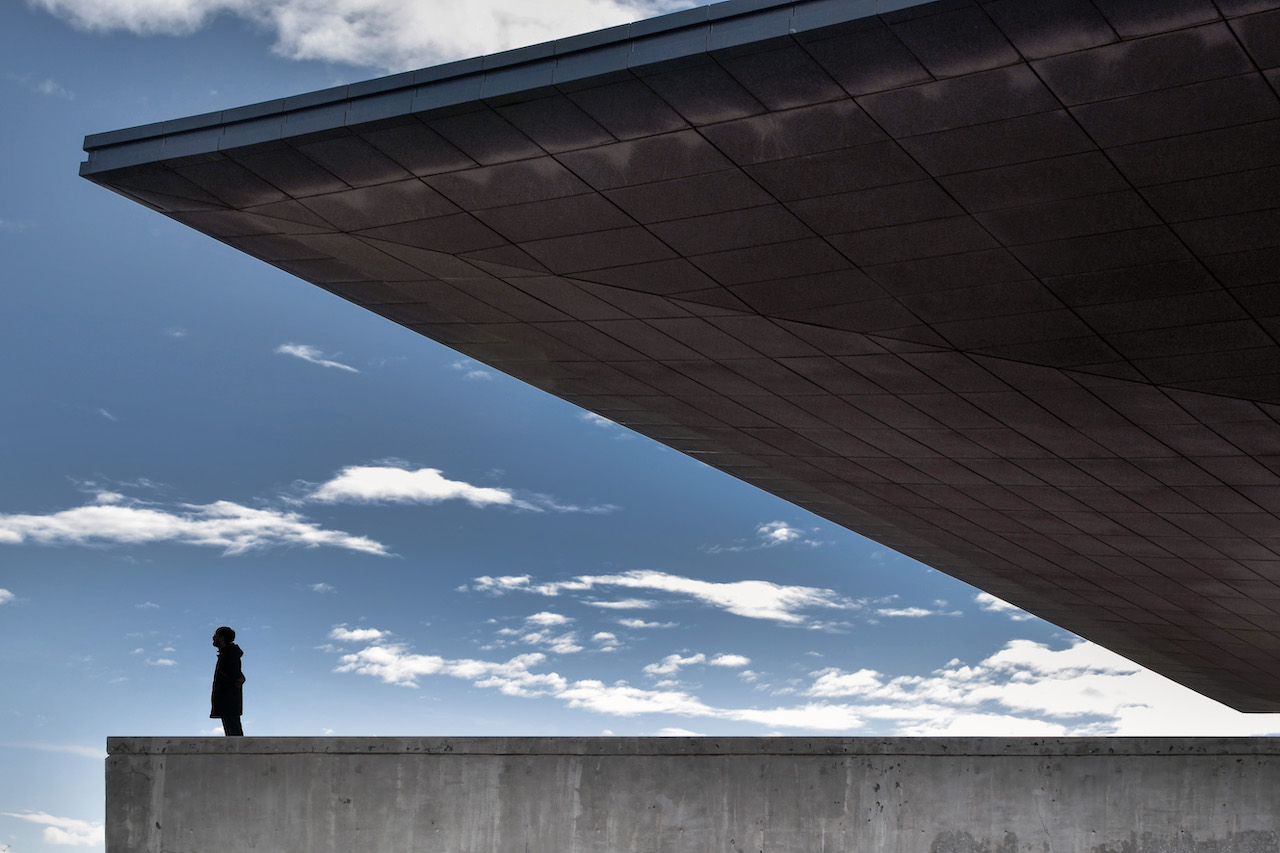
“Some people cannot sleep because of the well known “insomnia”. Well, the story of Marco is sort of the opposite, he’s a man who doesn’t have any pathological trouble with sleeping, he just doesn’t want to, obsessed with the idea that one day he might not be part of this planet and its beauty.
He doesn’t want to miss any sunrise sleeping and I accompanied him, once, to enjoy this activity. He took me to O Fournier Winery, outside the city of Mendoza, Argentina. We climbed to the terrace and enjoyed an unforgettable sunrise. He told me, smiling, that he loved that spot because he could feel the sunrise with all his senses and he loved the frame given by the existing architecture. I took this shot afterwords.
I heard once that the most important joy for an architect is to see that his building is loved by people.”
Camera: Nikon
“The boys of Metropol Parasol” by Pegah Rahimian
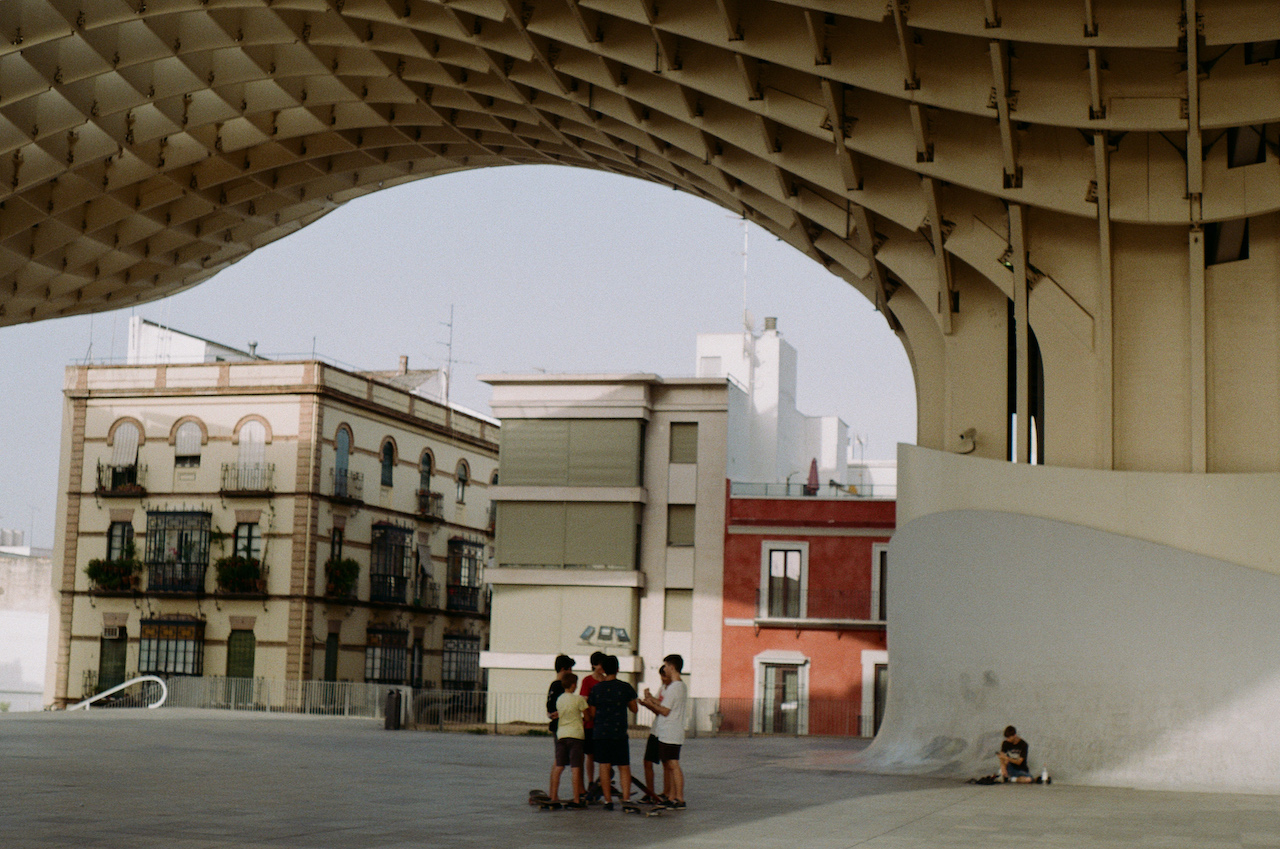
“Most often, there are no human beings in my photos. I usually wait, patiently, for everyone to leave and then my shutter clicks. Sometimes though, when I see the locals in my frame, I can not resist but to include them as an inseparable part of the structure, or as an essential thread within the city farbric. That is how this image came to life.Except for these boys, Metropol Parasol was filled with tourists on that day, including myself, my mom and my brother. I had to wait patiently for all the tourists to leave.”
Camera: Pentax
“Dancing in the “rain”” by Andy Macpherson
Andy Macpherson Studio
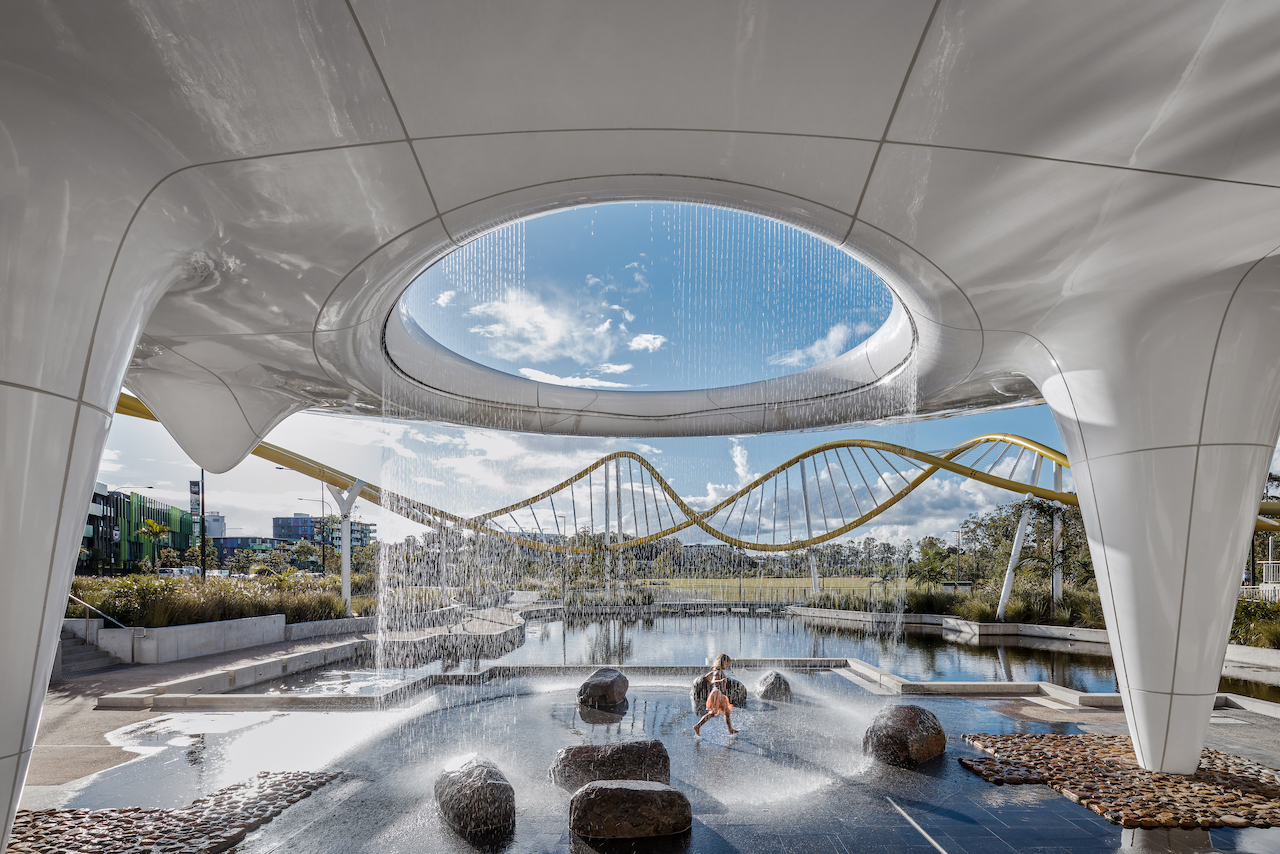
“This photo was taken on a commission to photograph a new community housing project on Australia’s Gold Coast. This structure is part of a common area that acts as the centre piece of the landscaping plan. After setting up from the best vantage point I could (at the top of a platform with my back squeezed against a wall) a little girl rain into the centre of the water feature just as it started its hourly pour and began dancing in the “rain”. Great timing and a nod to the playfulness of the girl and the architecture. Oddly enough, people are not encouraged to play in that area. Given the height of the best vantage point I set up my camera as low as possible on a tripod and used a 17mm perspective control lens to best give a sense of scale of the structure. Architecture by ARM Architecture.”
Camera: Canon
“Life Under The Pagoda” by Sai Zhao
China Academy of Art
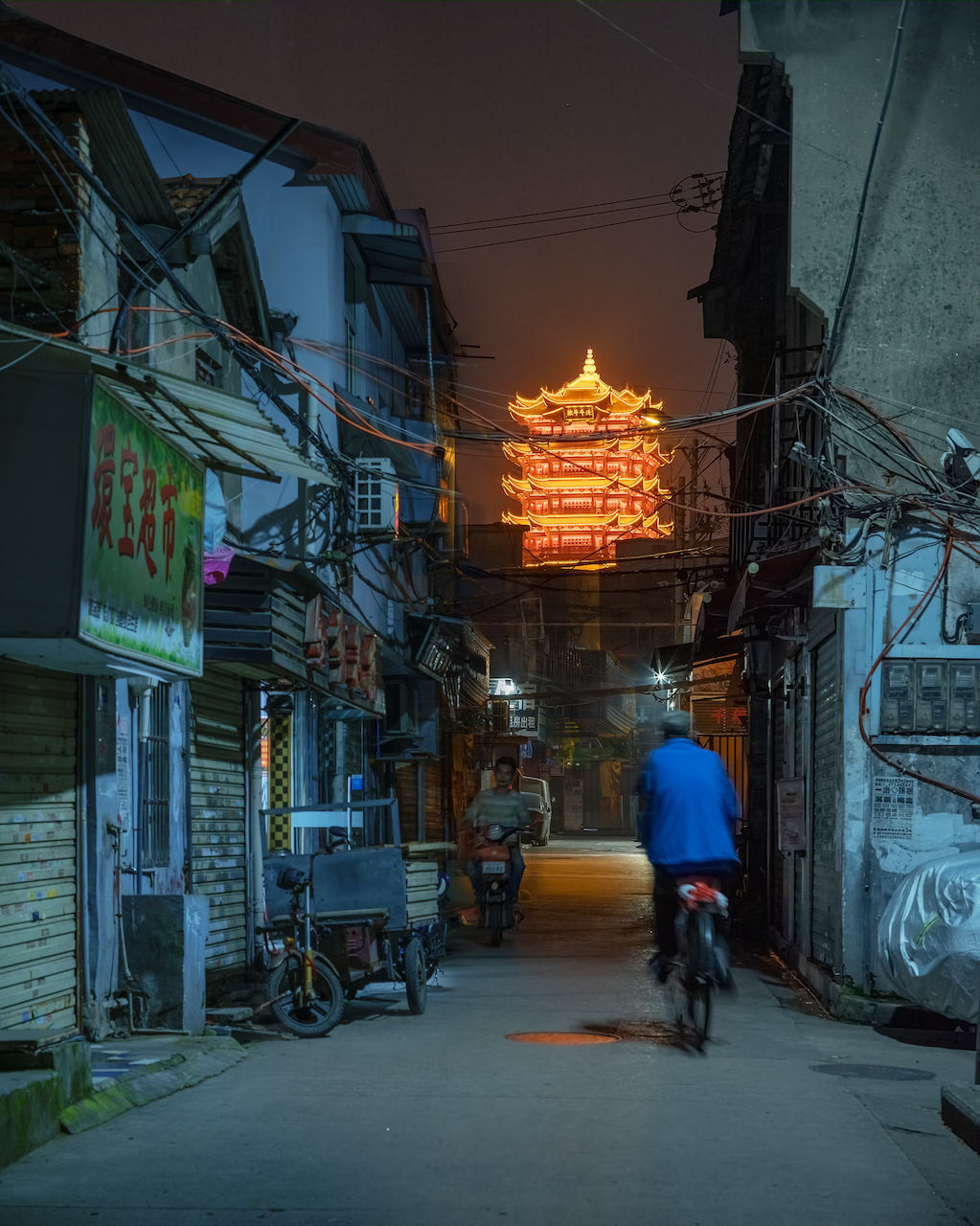
“This photo is taken of the Yellow Crane Tower in Wuhan, Hubei Province, China. It is a landmark building in Wuhan. It is a sightseeing building. Different from other simple shooting of the Yellow Crane Tower, I found an old street to be demolished. Such a more real city life is shown in front of us. One is a glorious and tall city landmark building, and behind it is the city Real life. On the surface, the city has become more modern and advanced, but there are still many dilapidated but real places in the city. In the process of urban development, too many streets showing real life have been demolished. This photo is a record of real life and a miniature of China’s large-scale demolition and construction activities.”
Camera: Fujifilm SLR
“Timkat” by James Brittain
James Brittain
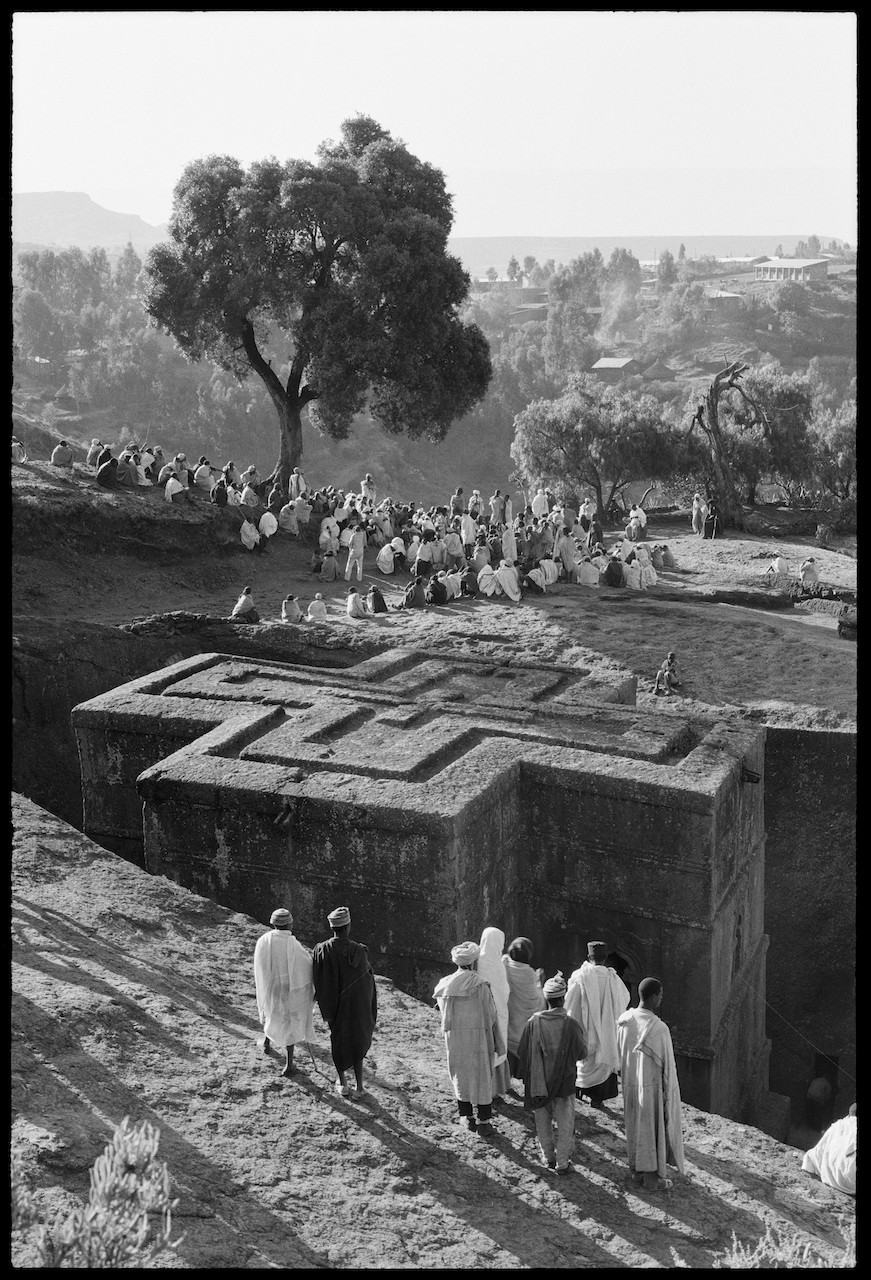
“In January each year thousands of pilgrims make their way to the northern town of Lalibela in Ethiopia to celebrate Timkat, the Orthodox Christian festival of Epiphany. Worship and reflection takes place at a series of ancient twelfth century churches carved into the mountainside.
The cruciform chapel of Bet Gioghis appears from the ground like a sacred artwork. It’s not built, but sculpted in reverse from solid rock to create what can best be thought of as a building “negative”. According to tradition, the monolithic structure was made on the instruction of the then King Lalibela, with the assistance of angels. An architectural marvel of its time, and an enduring source of wonder to this day.”
Camera: Other
“Simple Fun” by Kai Ping Wan
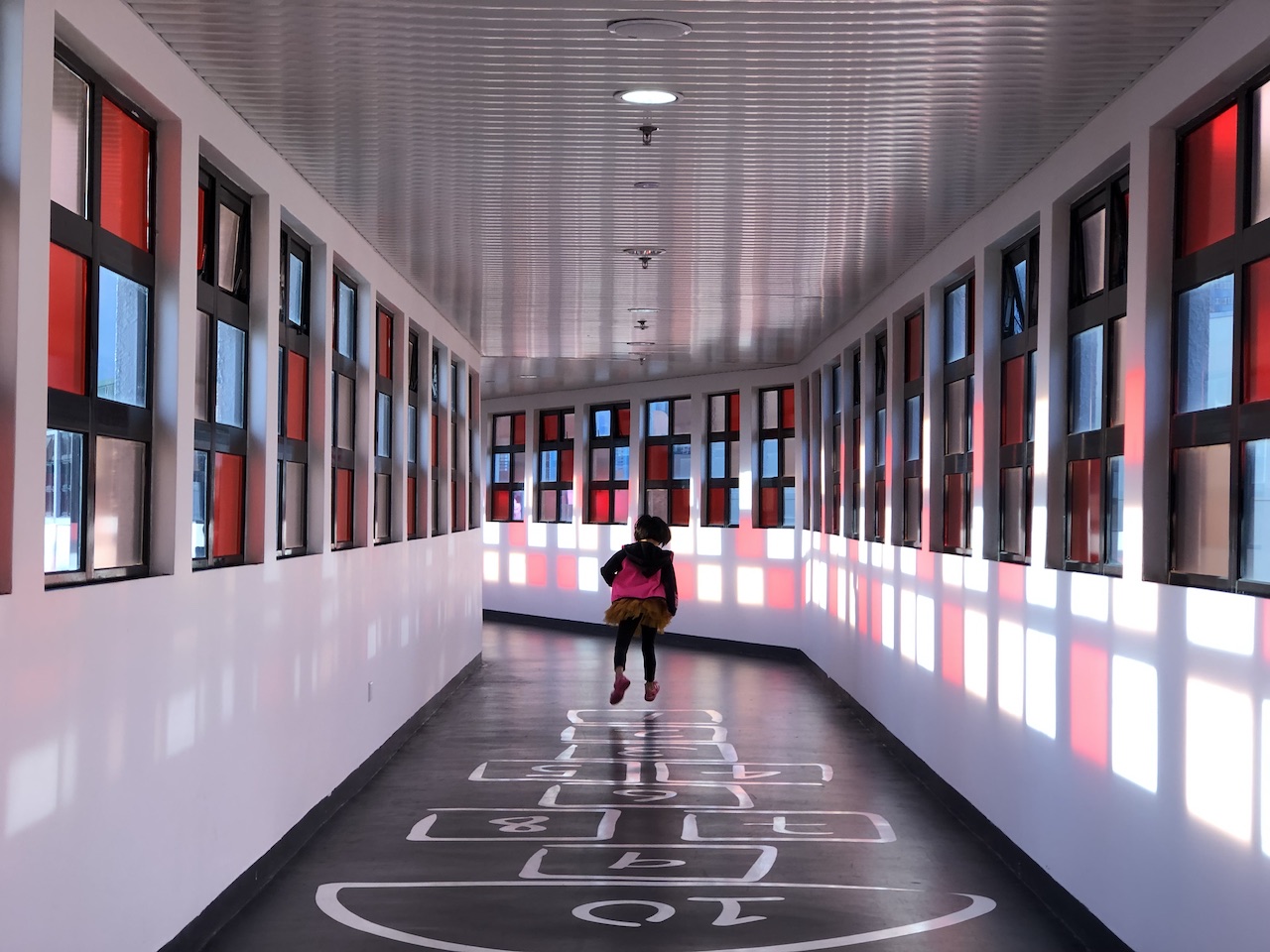
“In the midst of digital transformation and technology evolution, the simplicity of childhood fun elements slowly fades in our memory and diminishes in generations to come. With the ever-changing environment struggling alongside space constraints, simple childhood games like Hopscotch are scarce in the city landscape.
This brilliant idea of creating a fun walk space captured at the link of two buildings in Genting Highland of Malaysia can be a spark of light to new and old weaved into one. Each space can be a corner of discovery and thought-provoking moment bringing the past and the present where simple fun can still exist in the era of modernization. Digitizing old games to be elements of fun in buildings brings forth a different dimension of space, one that transforms an empty, quiet atmosphere to be filled with smiling faces.”
Camera: iPhone
“The Roofscape of the Obscure” by Venla Rautajoki
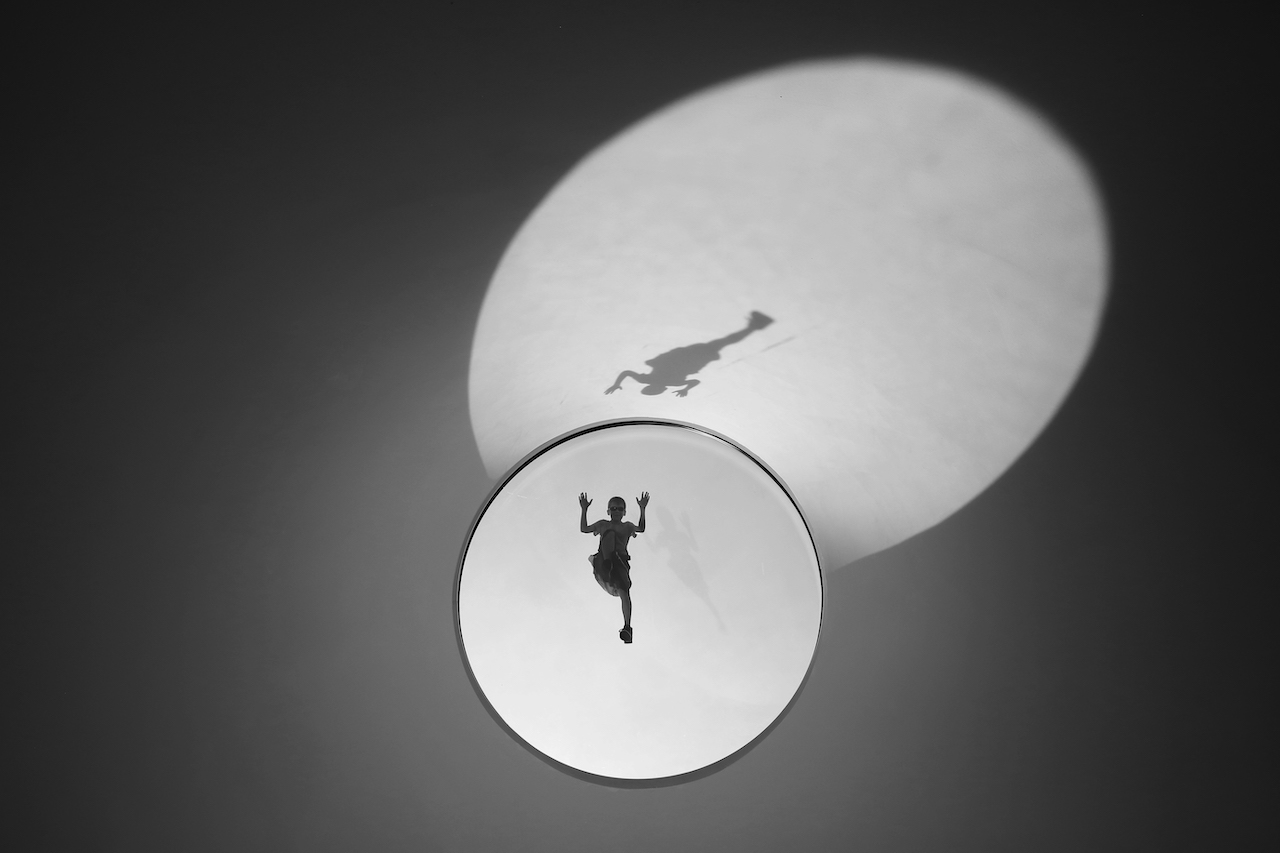
“The roofscape of the obscure captures the relationship between the hidden subterranean spaces and the active urban landscape of Amos Rex. This art museum, located in the very heart of Helsinki, is known for its windowed and hill-like domes creating a characteristic, urban environment ‘terra firma’, and a large-scale peephole beneath. This little boy drew my attention when he repeatedly climbed on top of a dome to oversee us inside the museum hall.
I chose this photograph in monochrome to strengthen the focus and power of light and shadow and to evoke a sense of timelessness. However, at the same time, man’s body figuratively resembles a clock – background as a dial and body as clock hands. Currently, many of us are battling with feelings of ceased time and solitude. When looking at this boy, you may relate to similar emotions, but simultaneously feel the freedom of exploration and curiosity.”
Camera: Canon
“Terlingua Night” by Peter Molick
Peter Molick Photography
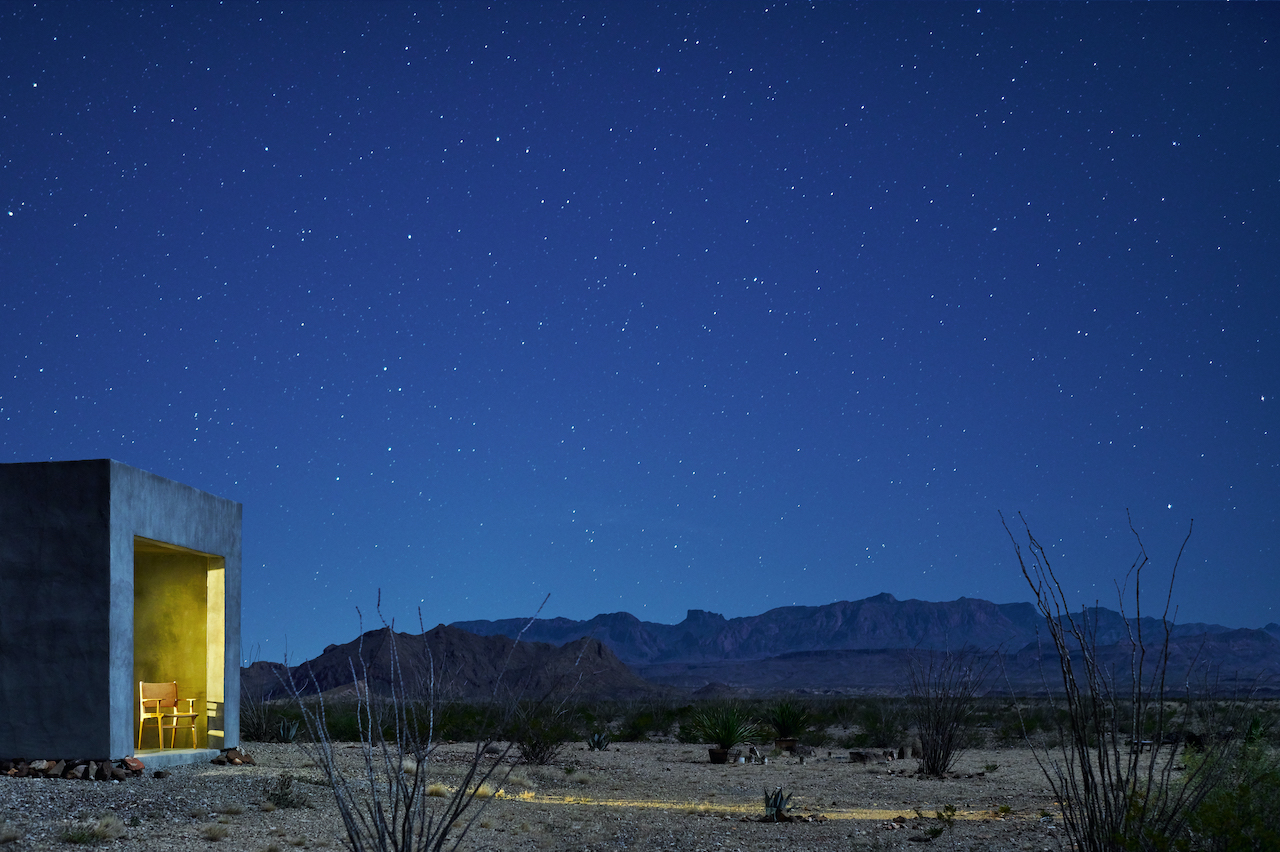
“Set in the Chihuahuan desert of west Texas, Terlingua is a small but vibrant community spotted with vast views of the nearby Chisos mountains to the east and some of Mexico’s rugged landscape to the south. This image depicts a guest house at the Willow House, each of which provides a perfect frame looking off into the vast openness allowing visitors to be one with the surroundings while also enjoying very comfortable ammenities. The area is also a designated dark sky region providing views of the stars that are seemingly endless.”
Camera: Nikon
“Beirut – Scaffolding our Past” by Jenny Merheb
American University of Beirut
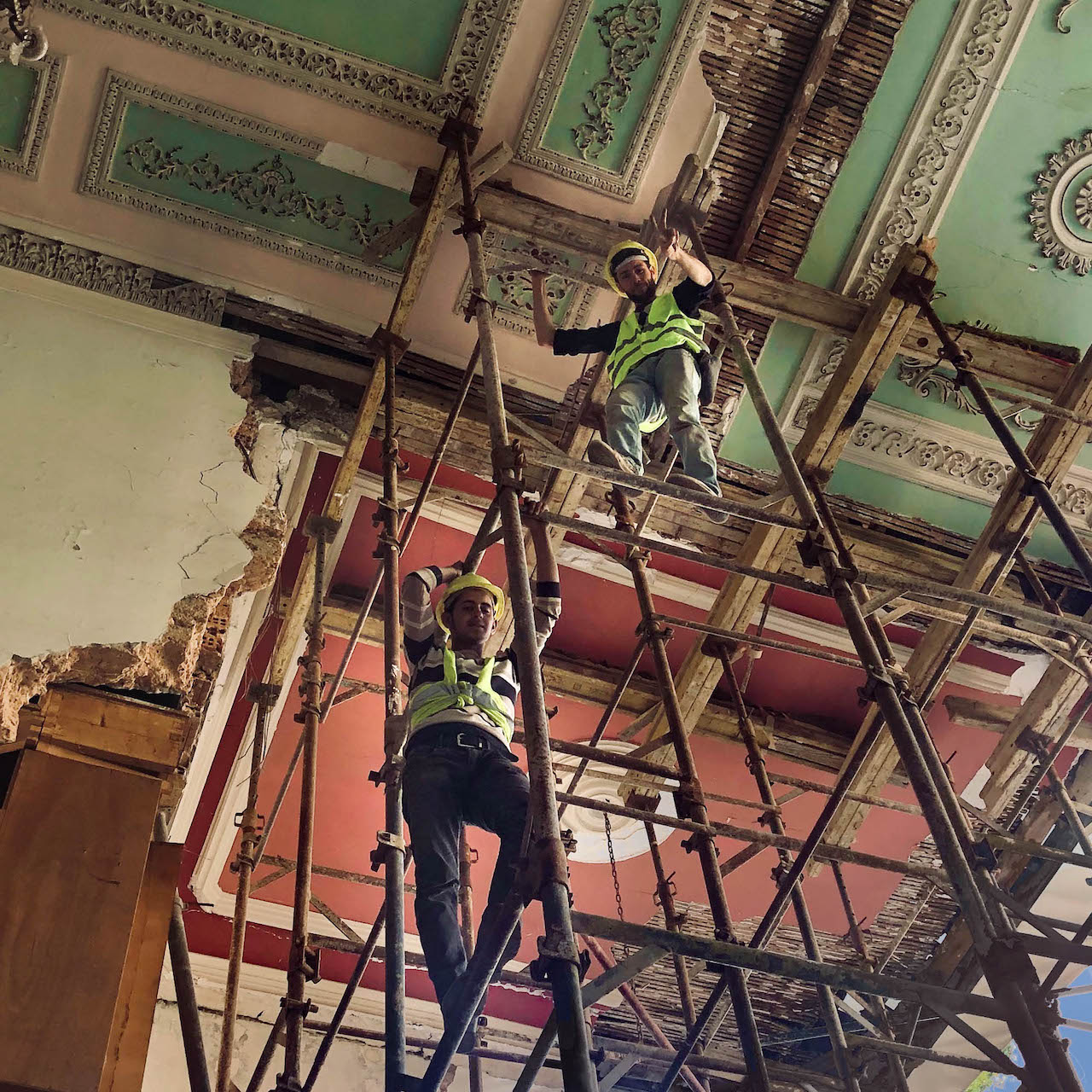
“Architecture is not just viewed as a collection of bricks and stones but rather as a conveyor of human interactions. Its destruction steals our very consciousness projected onto these inanimate objects as they behold the permanent fate of our memories, our past… and hence our humanity. The Beirut Blast left us scaffolding what remained of our architecture in a way to recreate and uncover our continuity with our past.”
Camera: iPhone
“Where Do We Come From? What Are We? Where Are We Going?” by Sasha Primak
Primus Studio
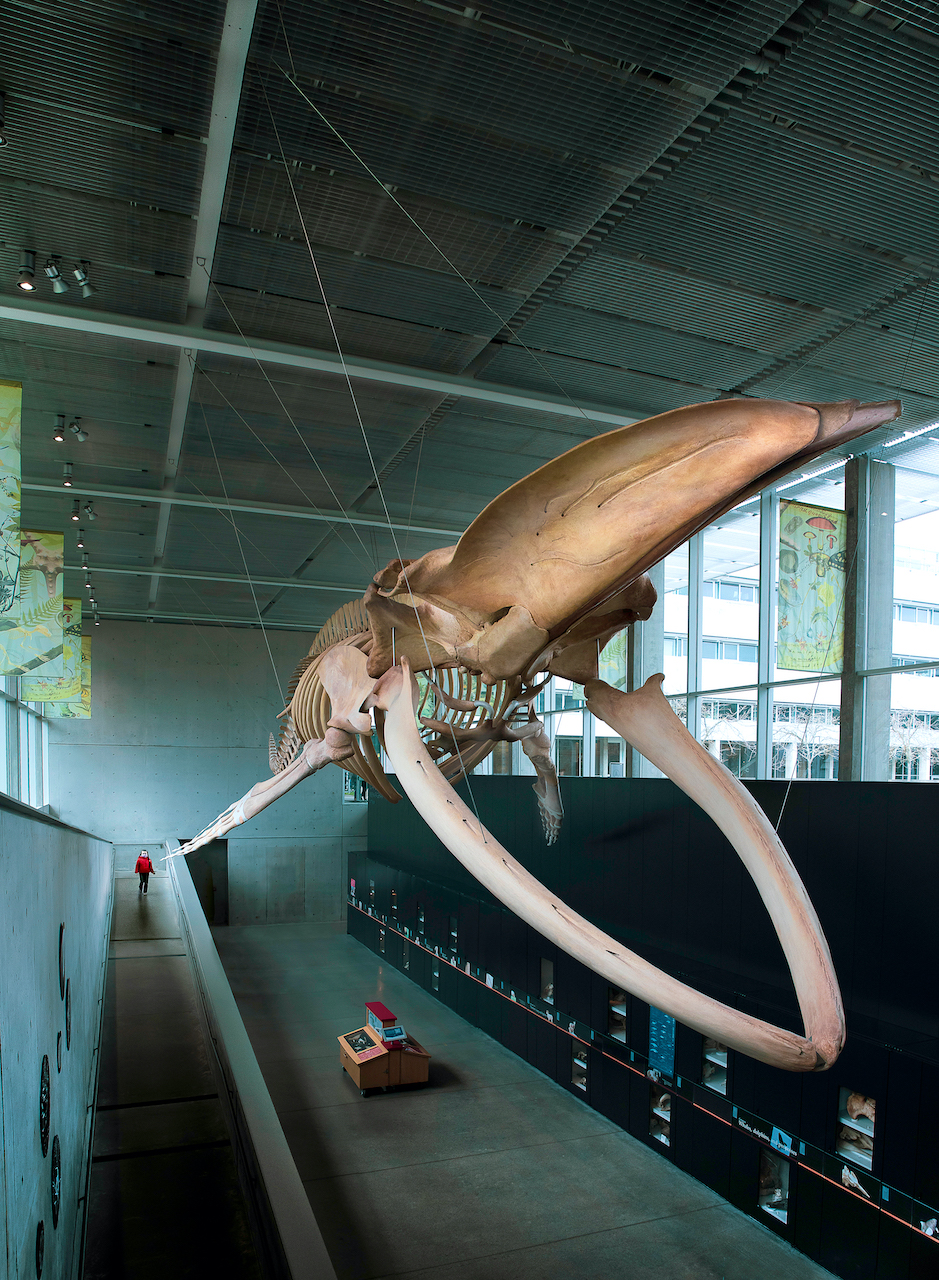
“Architecture is a way of seeing, thinking and questioning our world and our place in it.”
– T.Mayne
“The Beaty Biodiversity Museum by Patkau Architects provides accommodation to the blue whale skeleton that illustrates the interconnectedness of all living things. When visitors enter the museum they can admire the magnitude of the largest animal that has ever lived on Earth at eye level. Then, they can descend a switchback ramp to stand below and pause in awe of the skeleton’s full breadth.
The unobstructed view invokes the hushed reverence for nature’s wonder and puts things into perspective… The whale population has drastically decreased during the commercial whaling era and it may never fully recover. A minimalist aesthetic of this space, with its clean lines and a monochromatic palette, provides a beautiful in its simplicity backdrop for life’s drama while offering a perfect site for learning and self-reflection.”
Camera: Canon
“The stair, queen of architecture” by Justin Jakubisn
University of Washington
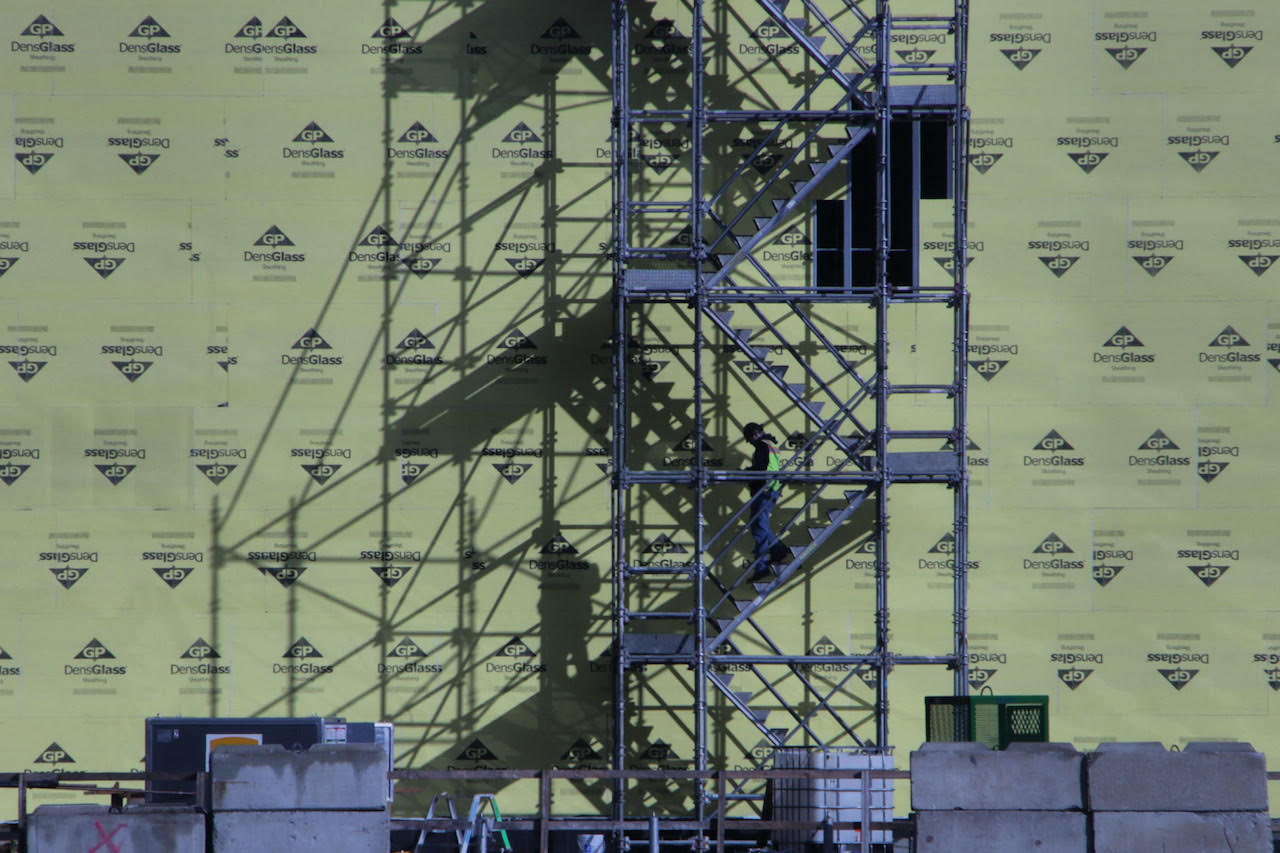
“The moment captured depicts a construction worker descending a quickly assembled temporary staircase. The project is the expansion of the Convention Center here in downtown Seattle. The essence it captures with the long shadows streaking across the sheathing evokes the passing of time and the incompleteness of the architecture as it continues to move forward in a year where time stands still.”
Camera: Canon
“A Breathing Corner” by GEORGE VINCE BERNYElrica Metayer
Universite Quisqueya
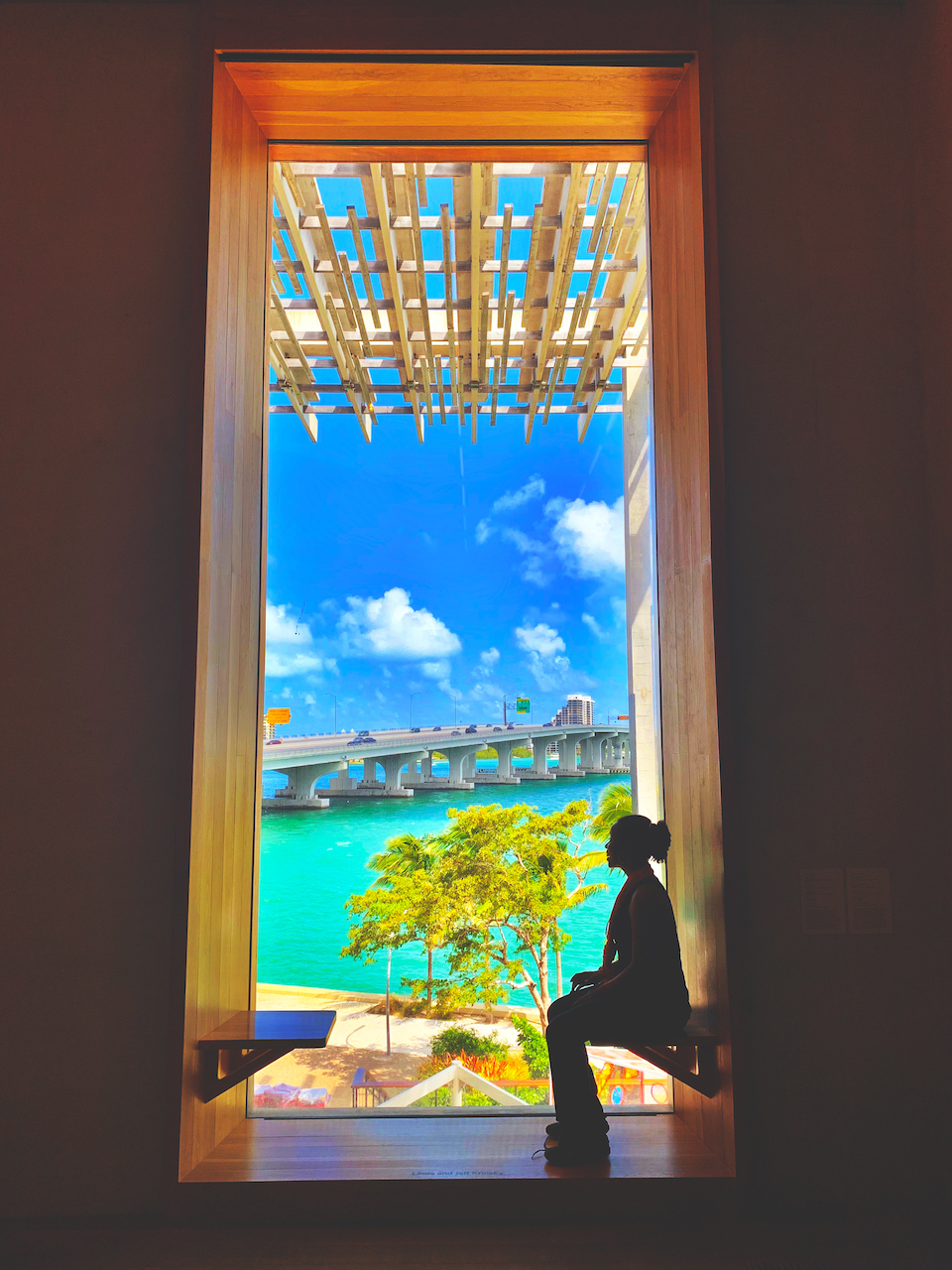
“That picture was taking at Movo In Miami, we went over there in discovered that corner which was like a window to another world with a deep contrast and reminds us to everytime we are stress that we would like to be in that corner again just to breath.”
Camera: iPhone
“Phillip Johnson Pennzoil Place Houston, Tx” by Leonid Furmansky
Leonid Furmansky Photography
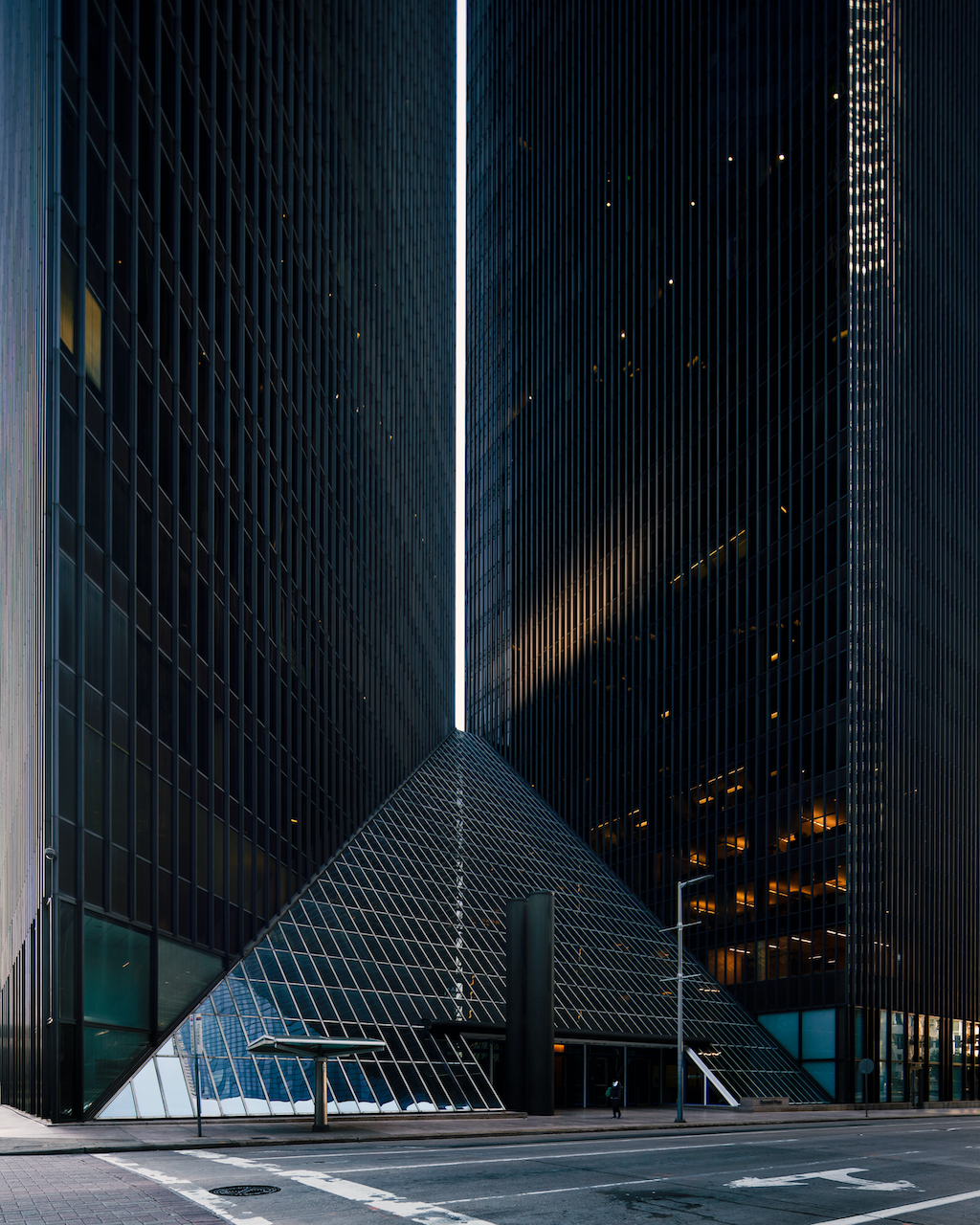
“Upon its completion in 1976, critic Ada Louise Huxtable called Pennzoil Place in downtown Houston a “towering achievement” in The New York Times. Designed by Philip Johnson for developer Gerald Hines, the building is a defining symbol of Houston. Today, Johnson’s legacy faces serious criticism due to his active participation in the Nazi party during the 1930s. His name has been removed from his thesis house, now owned by the Harvard Graduate School of Design, for example.
I think Johnson’s personal darkness makes this image feel evil when seen today, aided by the bronze metal and dark glass. But I also think the gasp of light between the towers is a sign of hope. It’s reassuring that buildings create their own history distinct from the problematic architect(s) who conceived them. It’s encouraging to see how they become places for people. Liberated, buildings join the life of the city.”
Camera: Fujifilm SLR
“Zip” by Tamás Wachsler
Steindl Imre Program Nonprofit Zrt
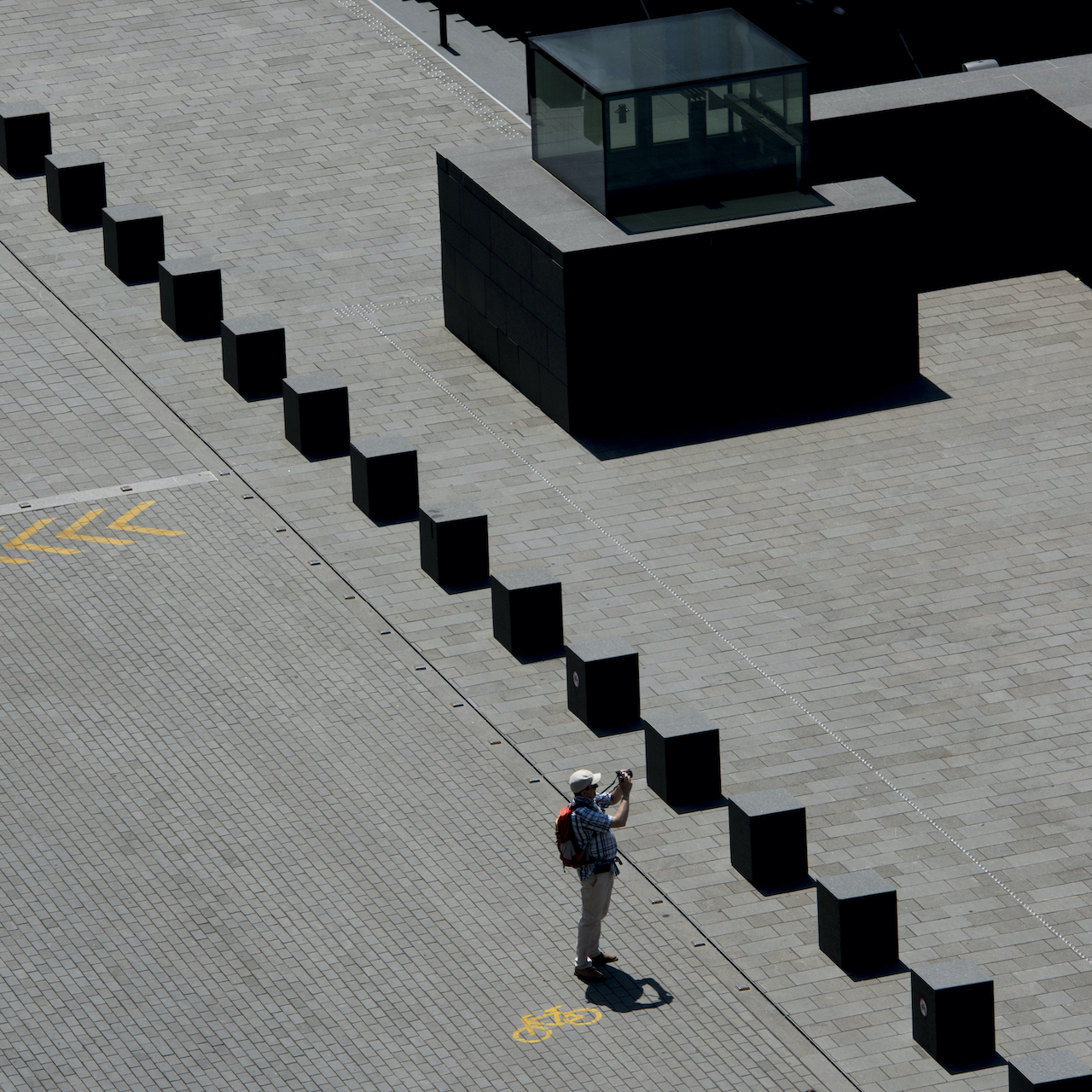
“A lone photographer explores the new contemporary environment of the old Hungarian Parliament Building.”
Camera: Nikon
“Louvre Looks” by Paul Vu
Here And Now Agency
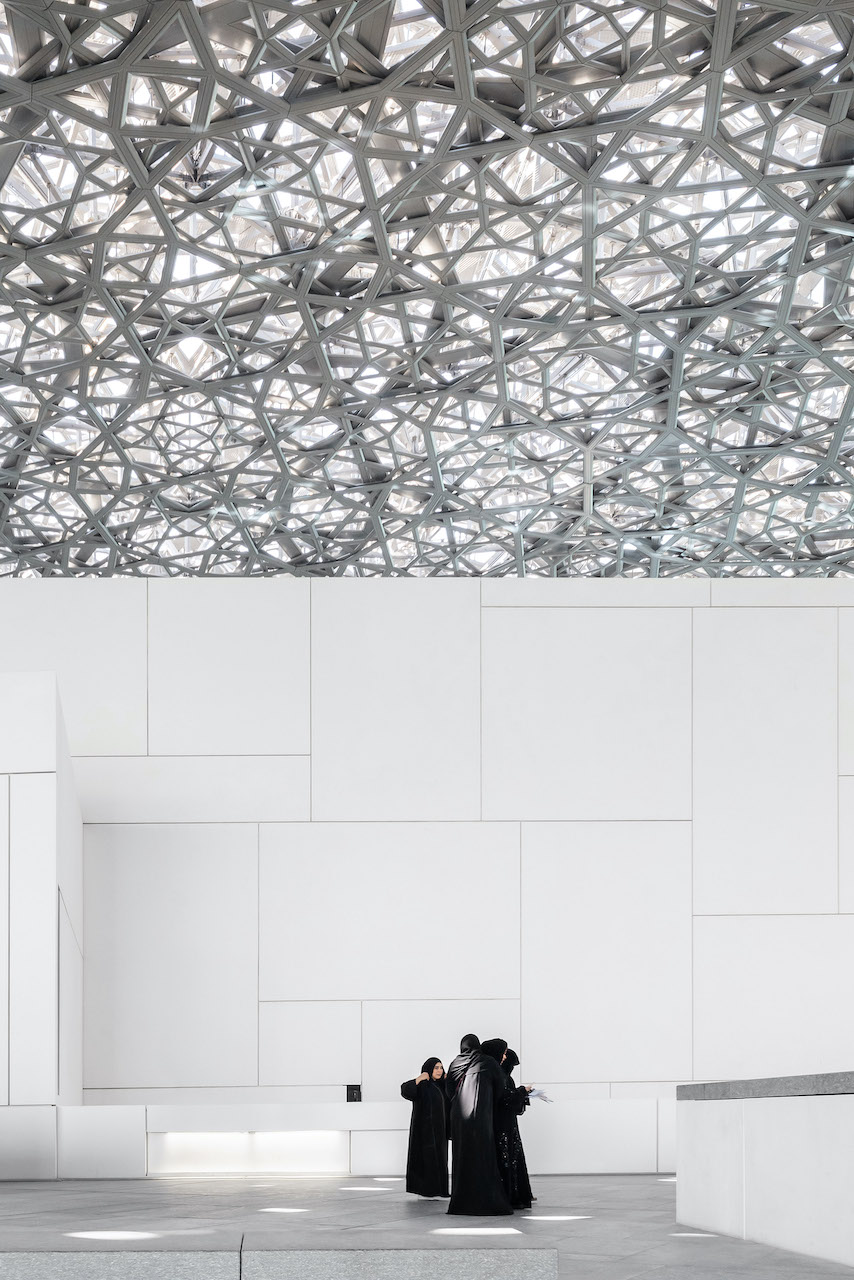
“The Louvre Abu Dhabi is an immense project that defies most human conventions of scale. As with most of my work, this photo celebrates architecture. As the name of the institution suggests, the design is informed by two unique cultures. I hope this photo communicates that as well.”
Camera: Leica
“First Day at The Rajkumari Ratnavati Girl’s School” by Diana KelloggDiana Kellogg – Architect Vinay Panjwani – Photographer
Diana Kellogg Architects
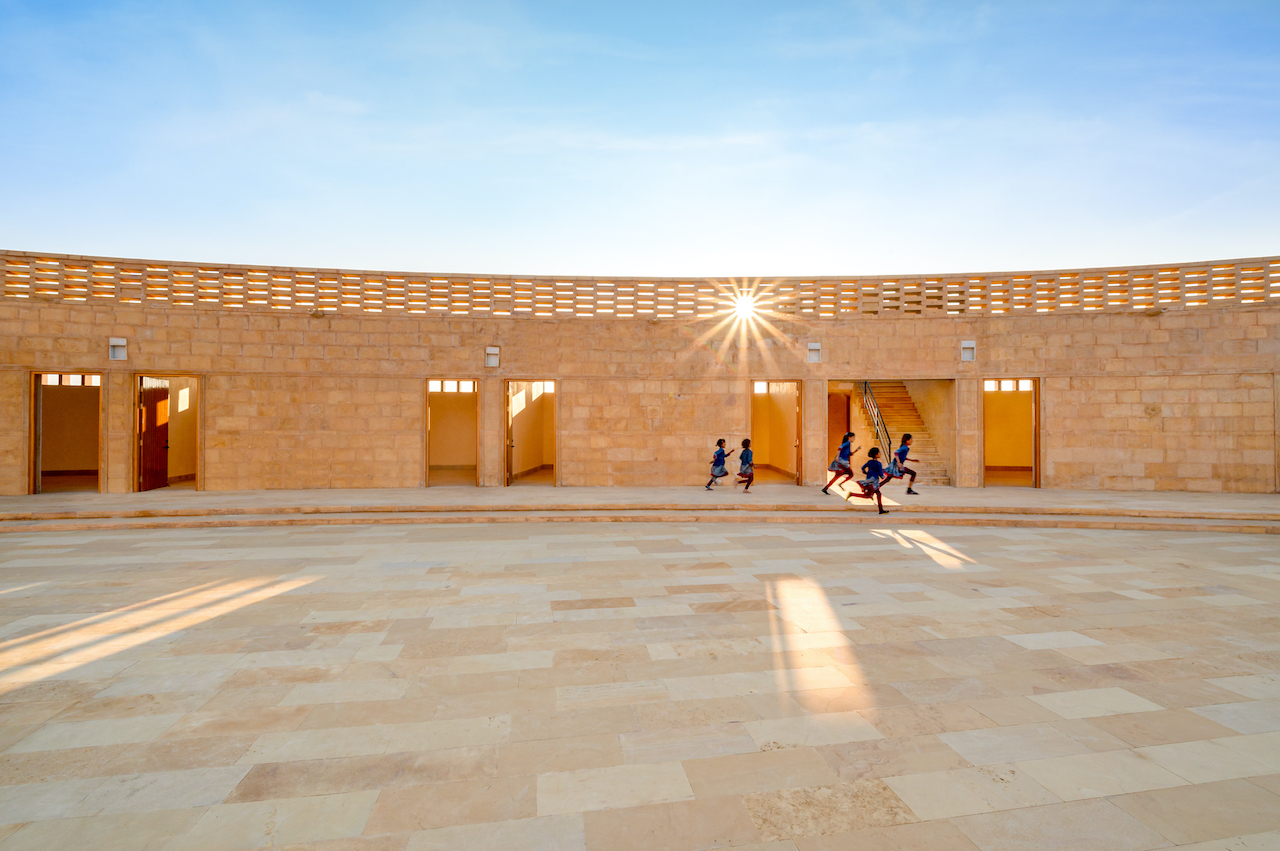
“This captures the magnetic energy the girls had when they entered The Rajkumari Ratnavati Girl’s School for the first time, a fantastical oval structure that sits atop empty acres in the heart of the mystic Thar Desert in Rajasthan, India. It will serve more than 400 girls, kindergarten – class 10, that live below the poverty line where female literacy barely touches 36%. Standing as a beacon in its desert kingdom of Jaisalmer, the building’s solar canopies and jallis keep the heat and sand out so the girls can learn and play comfortably.
A living, breathing symbol of empowerment, it was designed to improve the lives of the community. Local craftsmen – often the fathers of the girls – built the school using local sandstone and soon, two more structures will be erected: an exhibition space and a women’s cooperative where artisans will teach mothers and other women traditional skills.”
Camera: Nikon
“Tolerance Bridge” by Shoayb Khattab
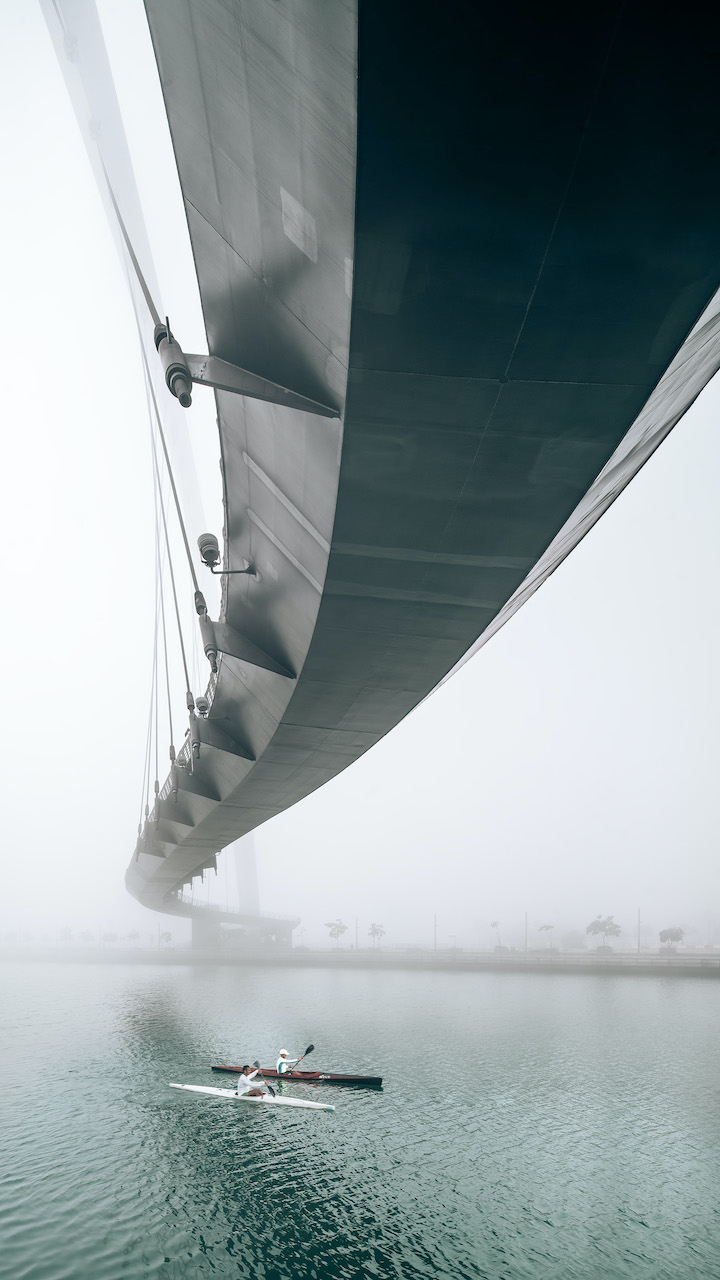
“I always loved walking by Dubai Water Canal bridge which is called Tolerance Bridge, when I knew there is going to be heavy fog next day I planned to visit it again, I was also lucky by having those two guys under the bridge which gave a great sense of place and scale of the project.”
Camera: Sony
“Mumbai from Above” by Babak Eslahjou
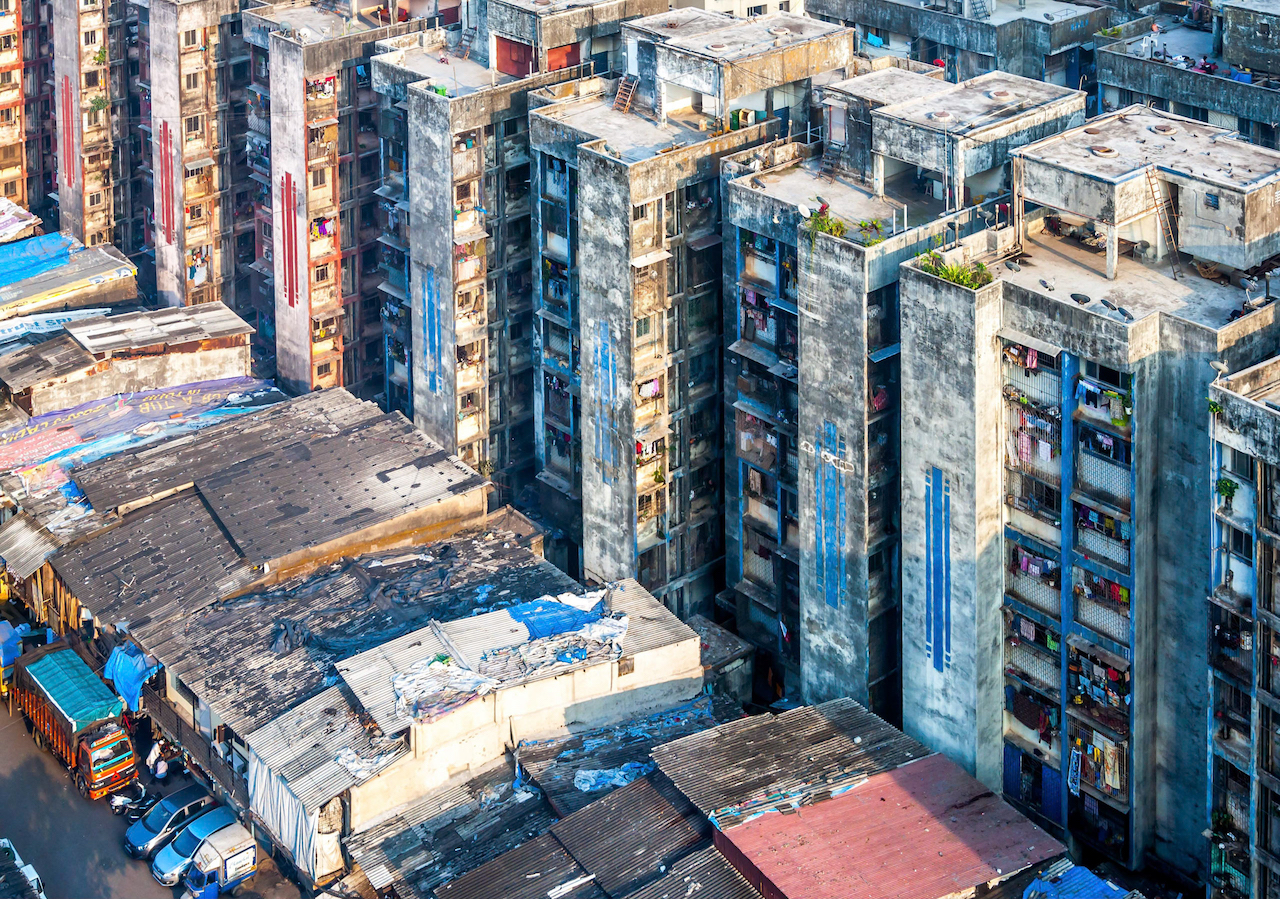
“‘Mumbai from Above’ is a vivid depiction of the resilience and spontaneity of people. Countless acts of individual accommodation have transformed the seeming monotony of prescribed urban forms into a dense visual quilt of human activity. This image reminds us that the architecture of the city cannot simply be prescribed by specialists. Instead, the city arises out of the needs and sensuality of its inhabitant.”
Camera: Nikon
“Roxy Club – Prague in covid times” by Jakub SkokanMartin Tůma
BoysPlayNice Photography
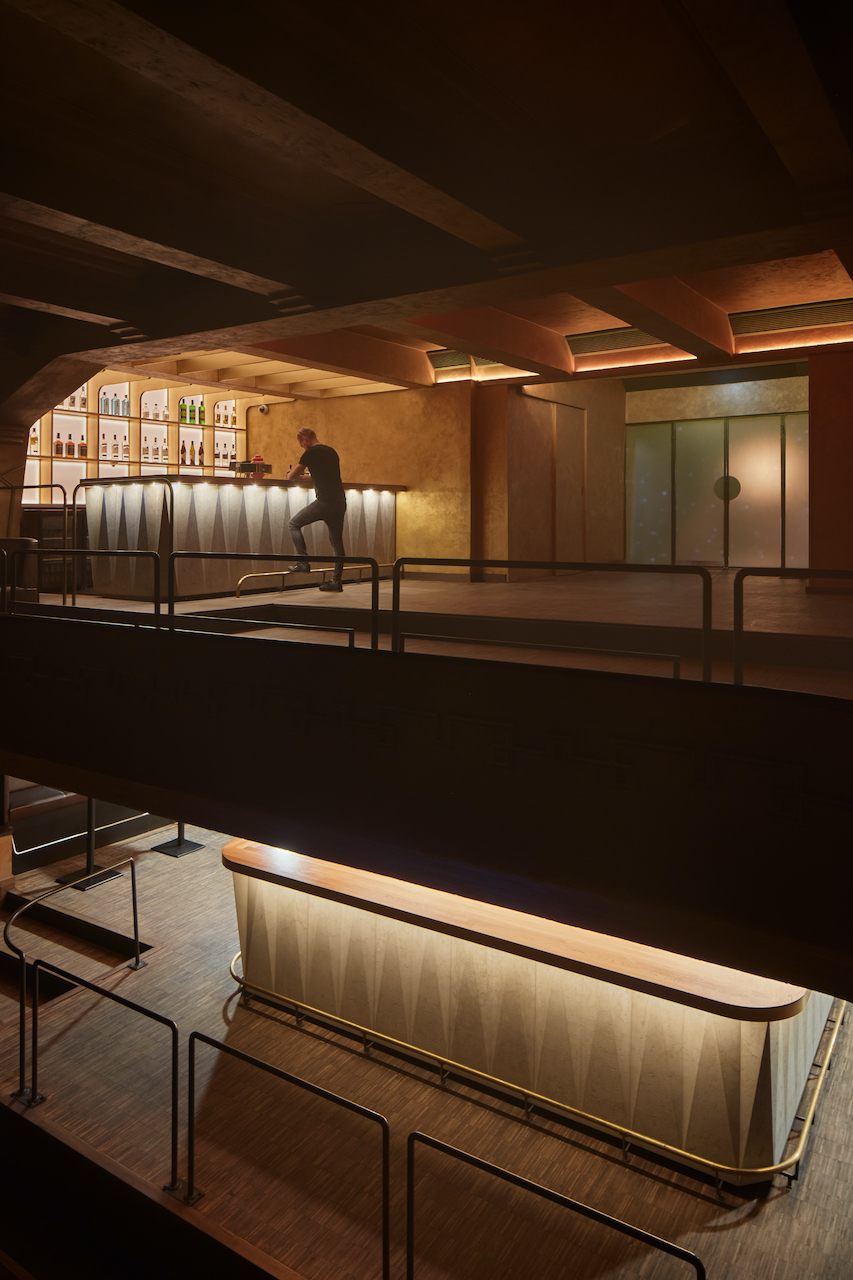
“Description of project: Mar.s architects incorporated in the design of the bars in the Roxy club in the center of Prague some of the nobility of the late 1920s and the original ART DECO-style cinema. Significant elements of the whole composition are brass lamellas and full-area backlit opal glass. The main mass of the bar consists of openwork concrete castings with brass accessories. All components were developed as original and handmade.
Story of photograph: The photo shows figure of the architect of the redesign of the famous Prague’s club, which has been empty for a year due to a pandemic. The atmosphere of the photography refers to the time of covid, when the whole culture, artists, entrepreneurs as well as ordinary people have to face loneliness, minimal support and, above all, killing insecurity.”
Camera: Canon
